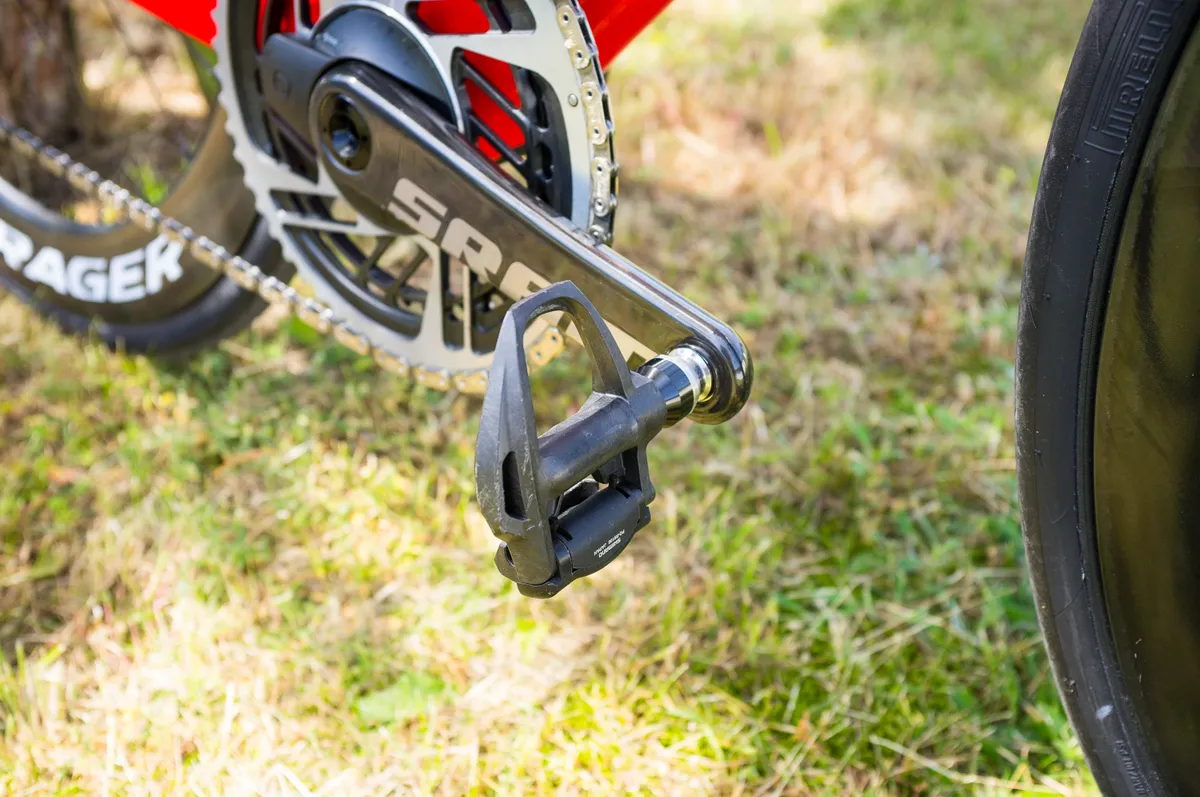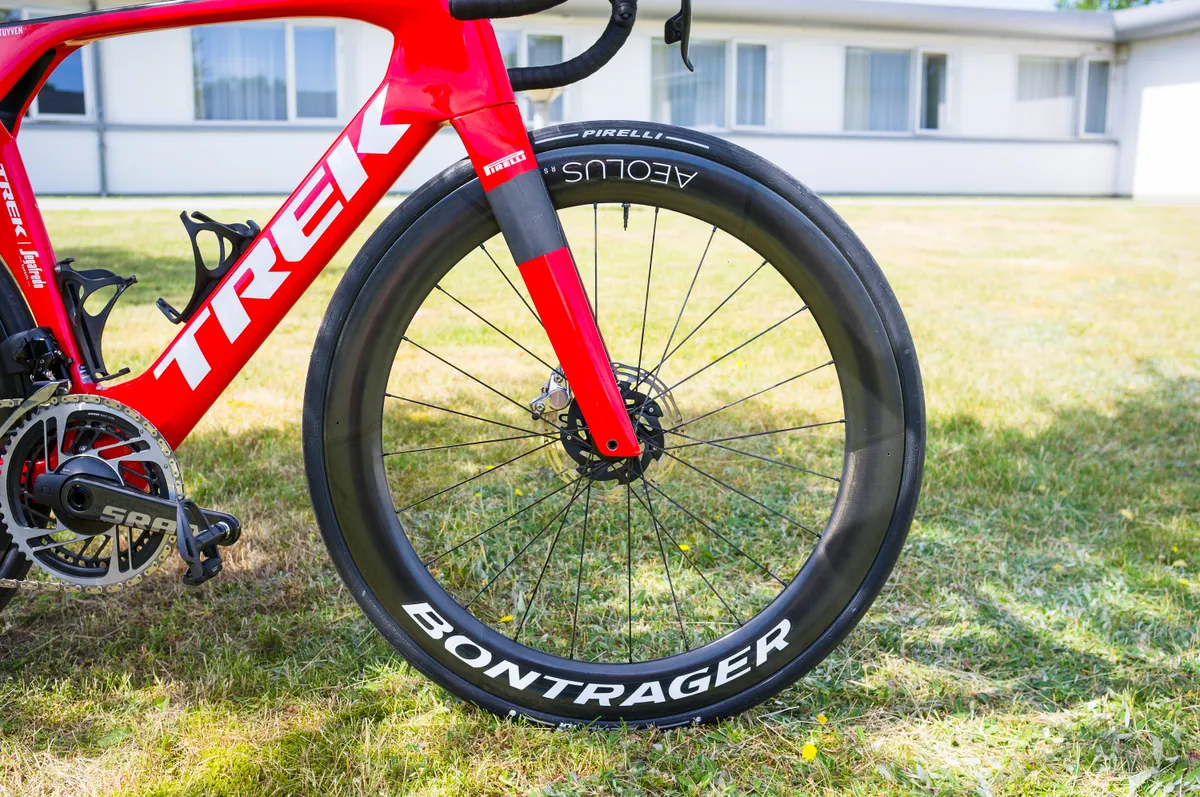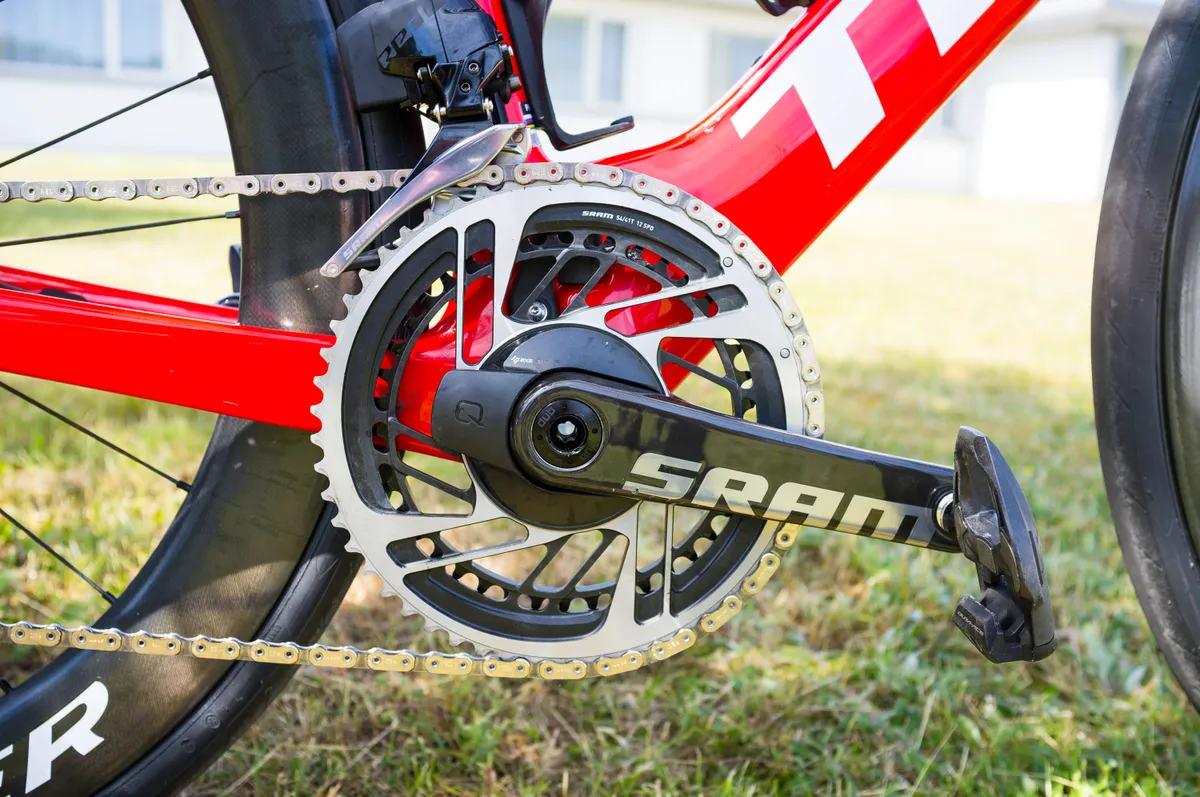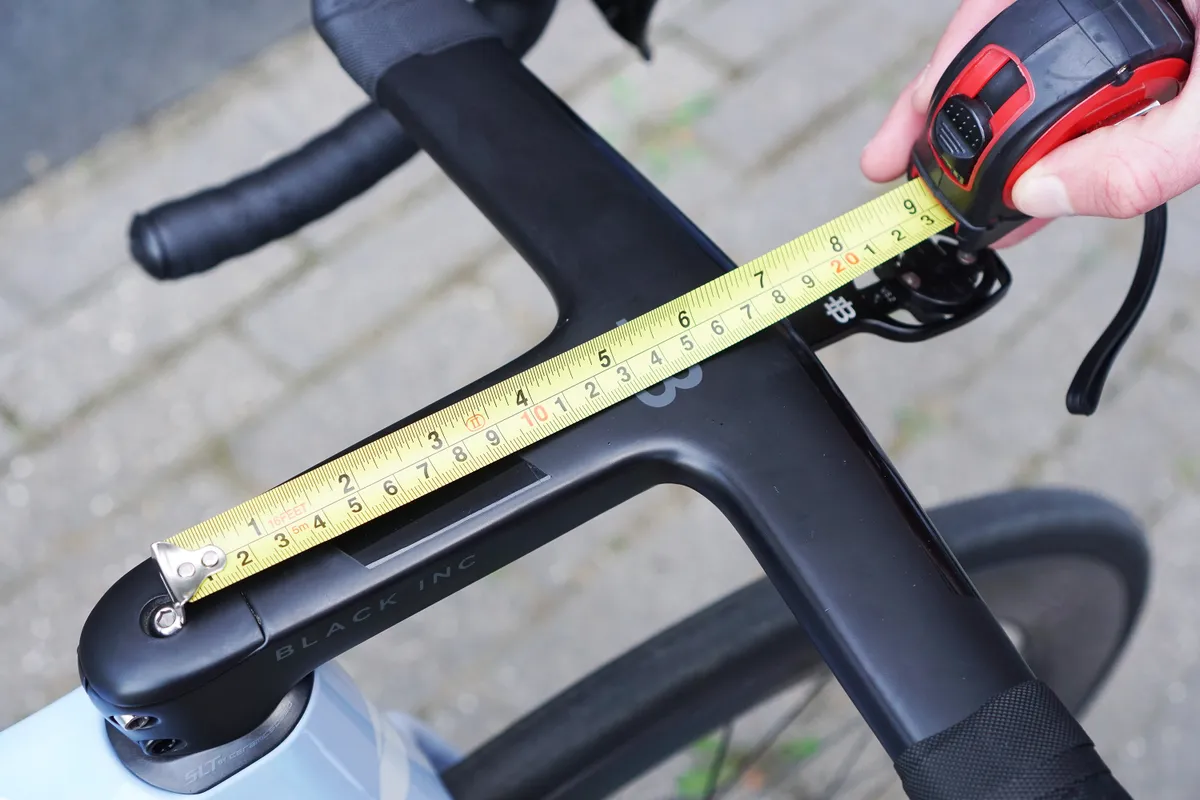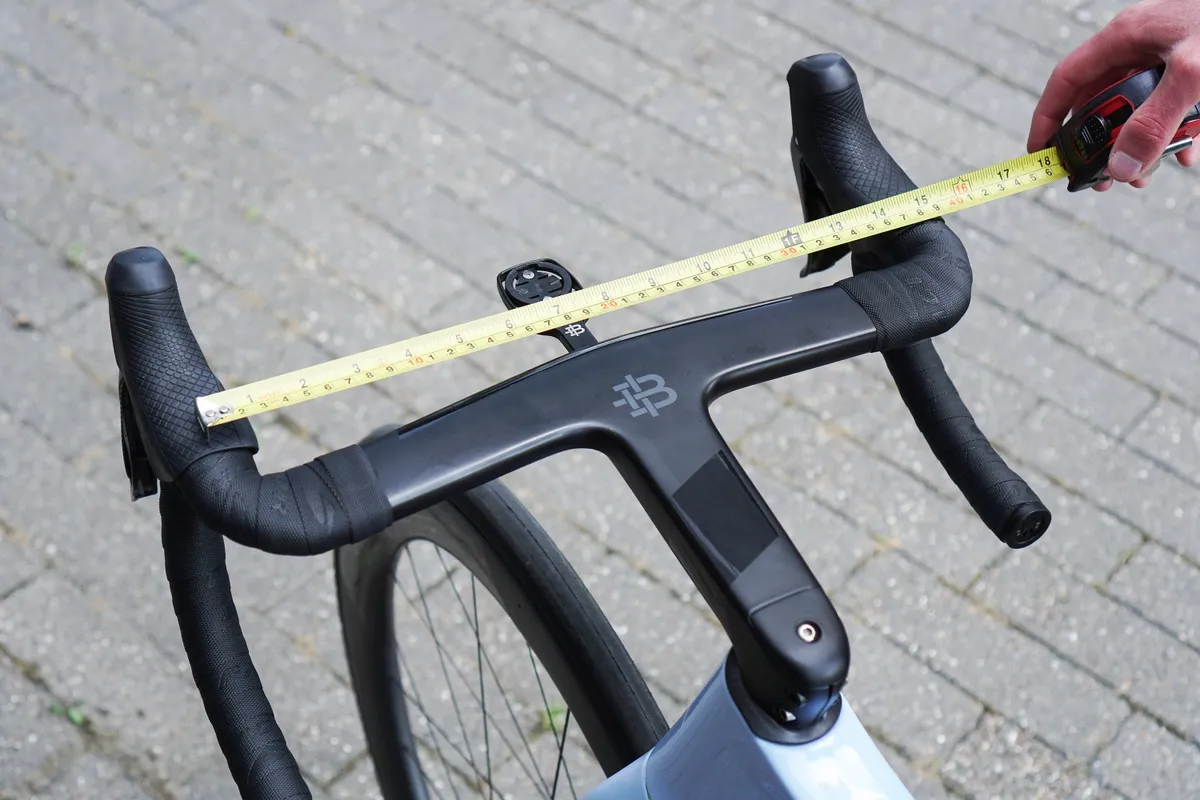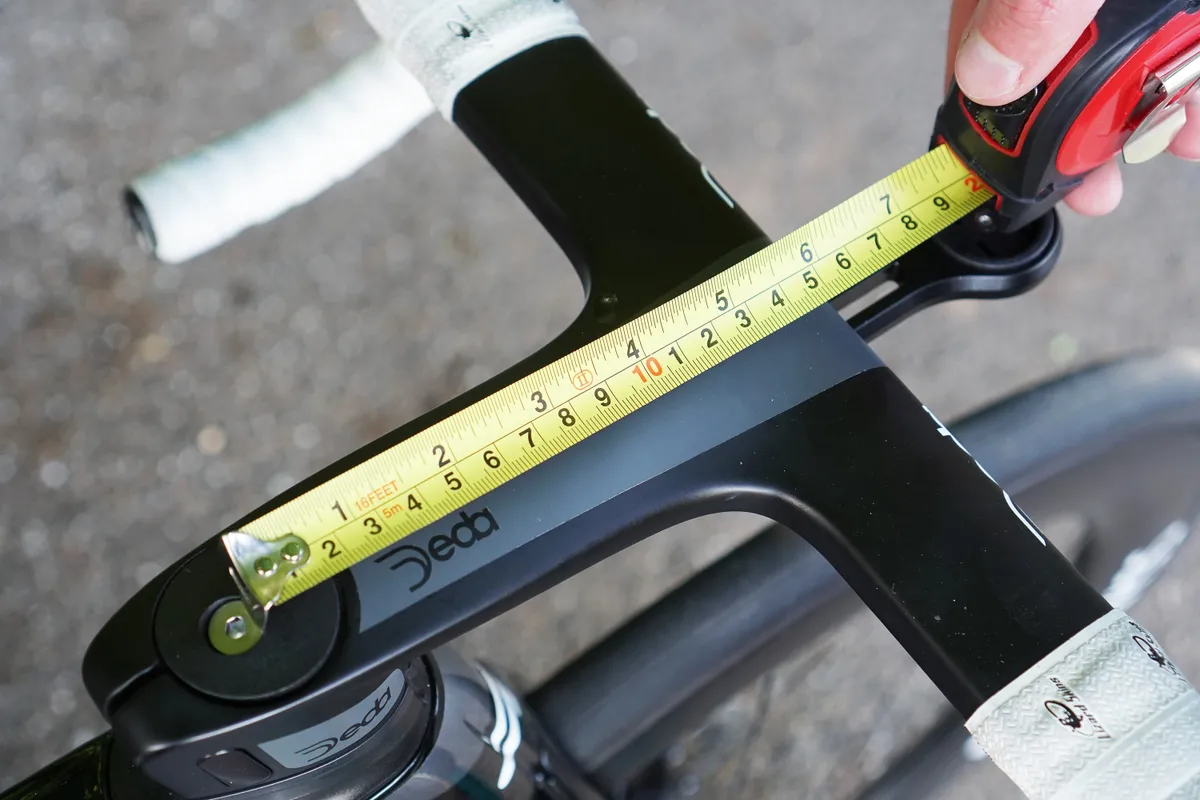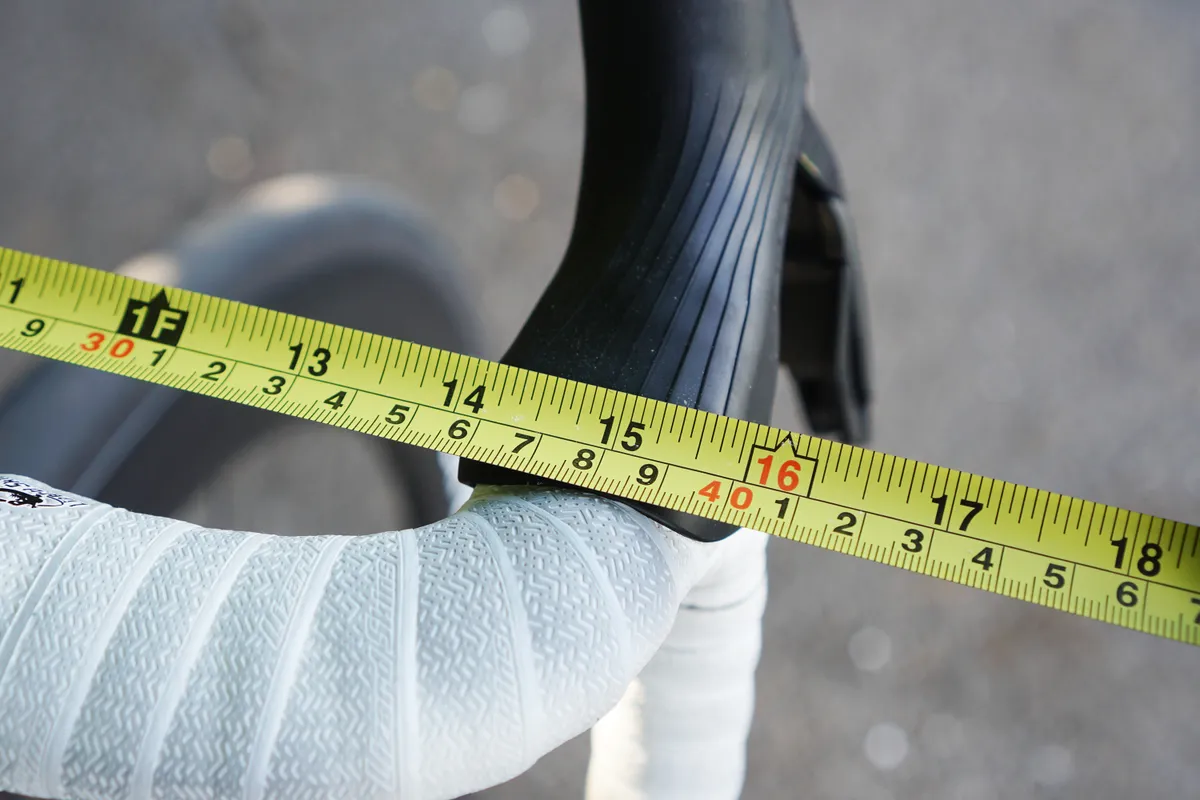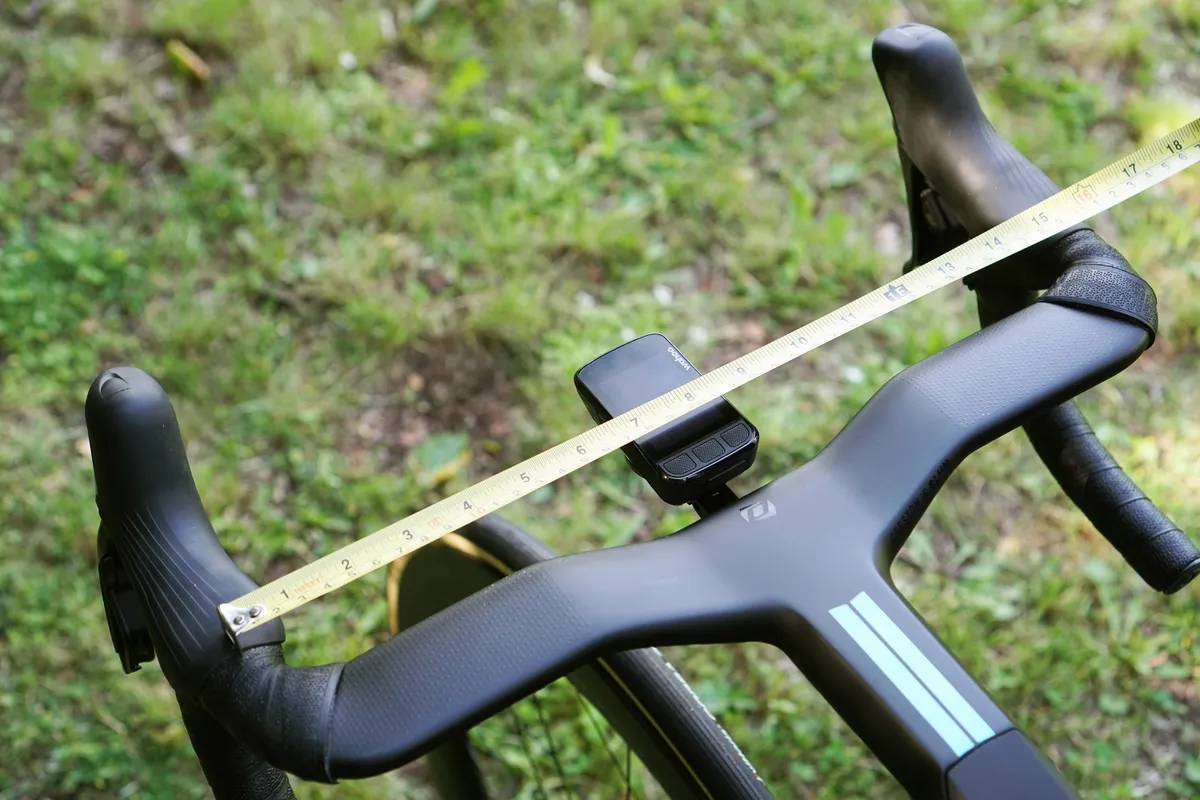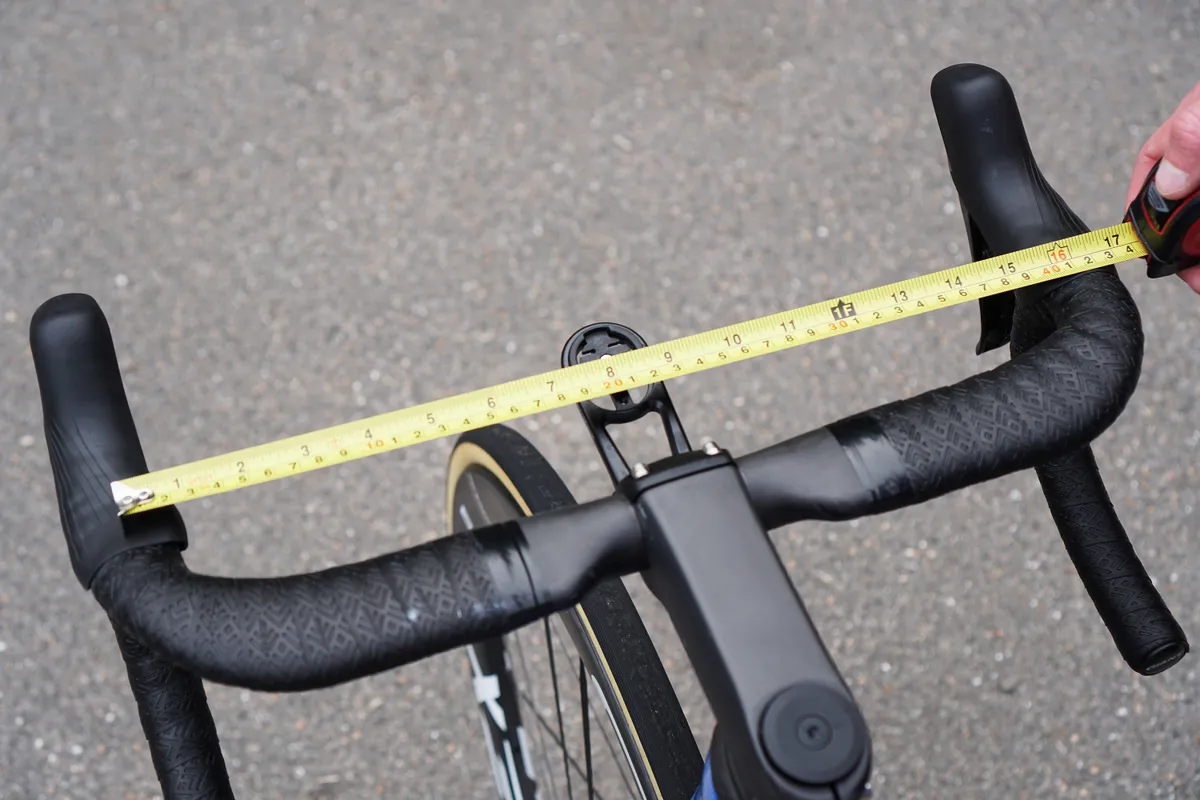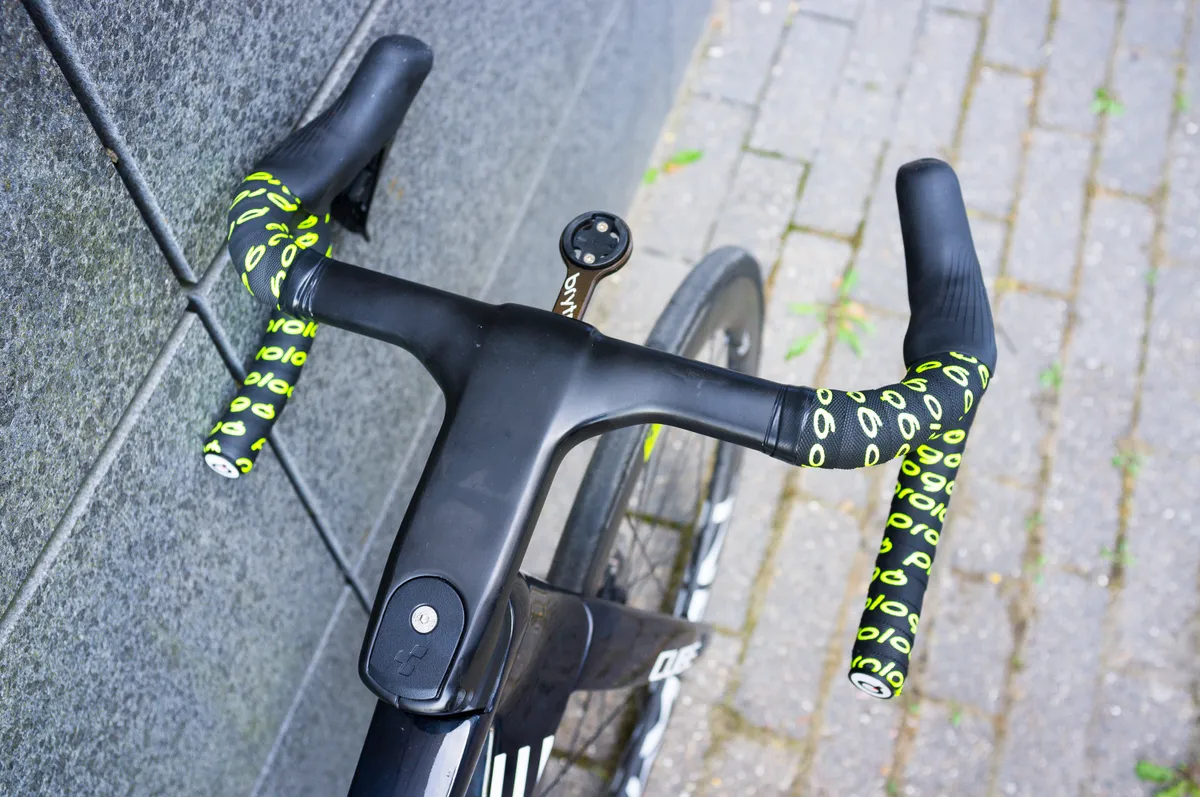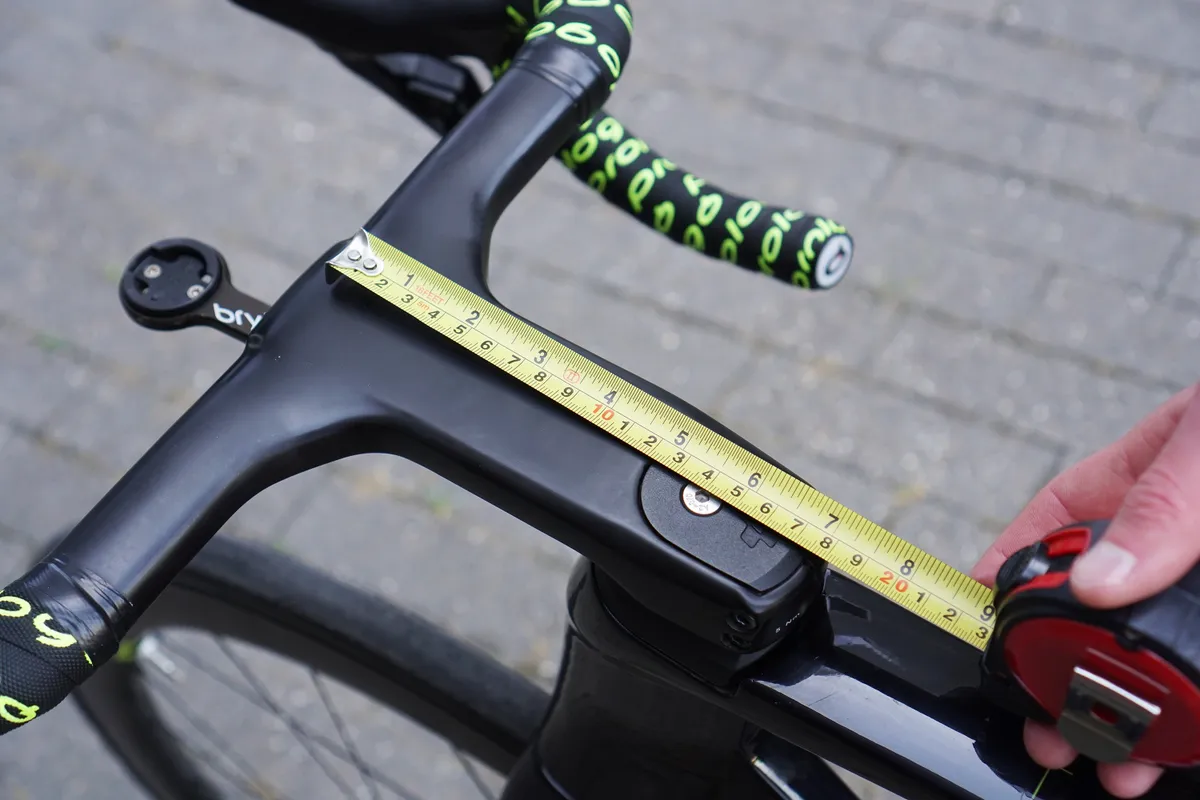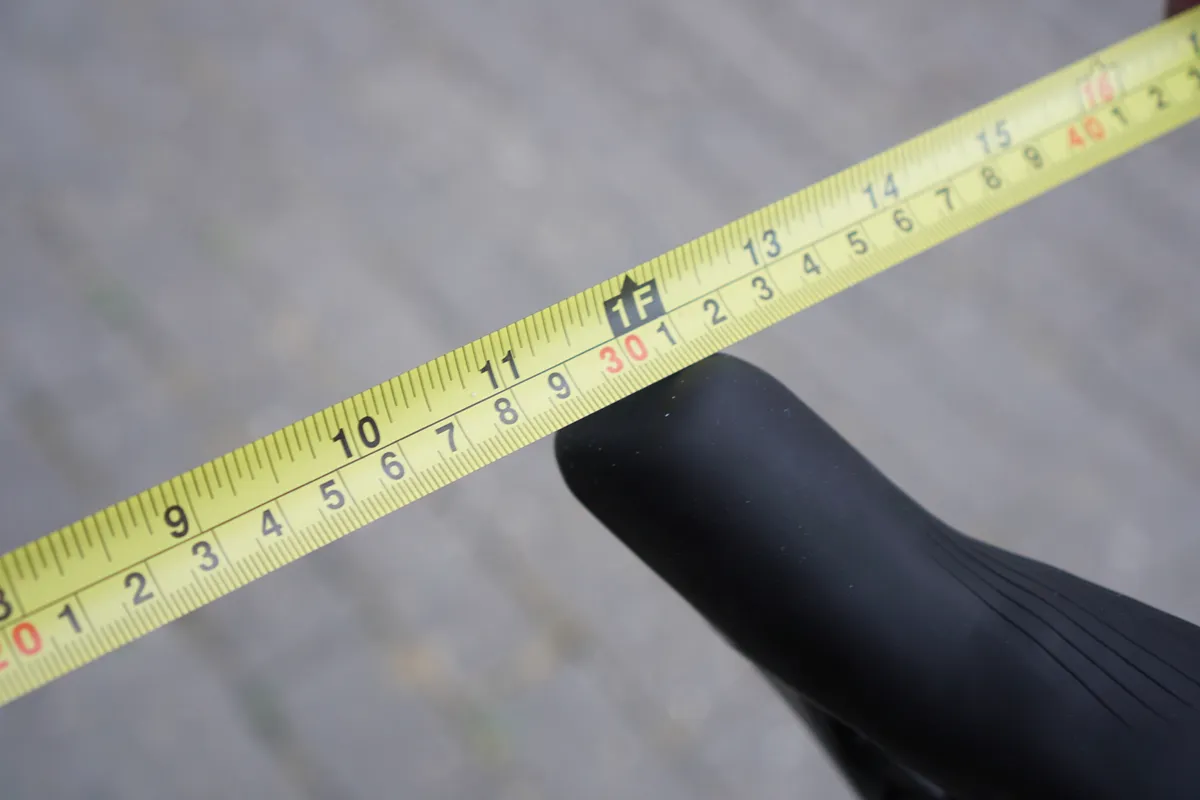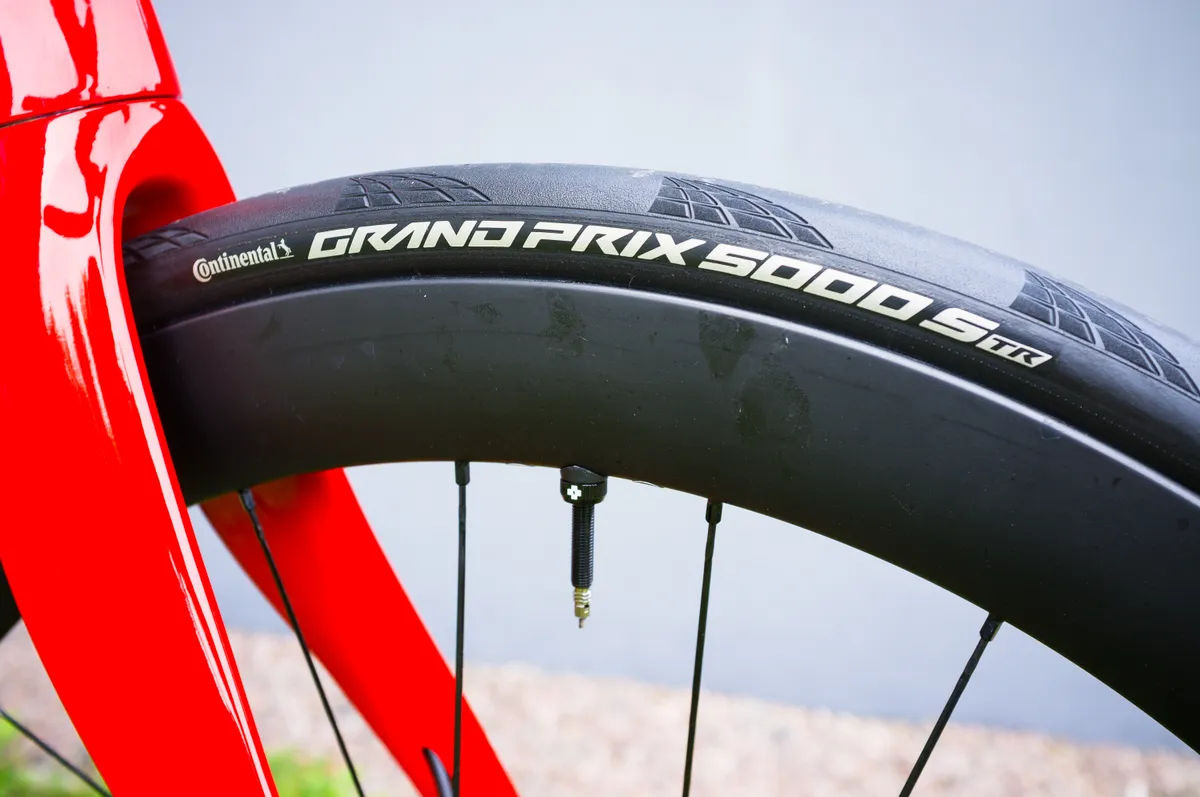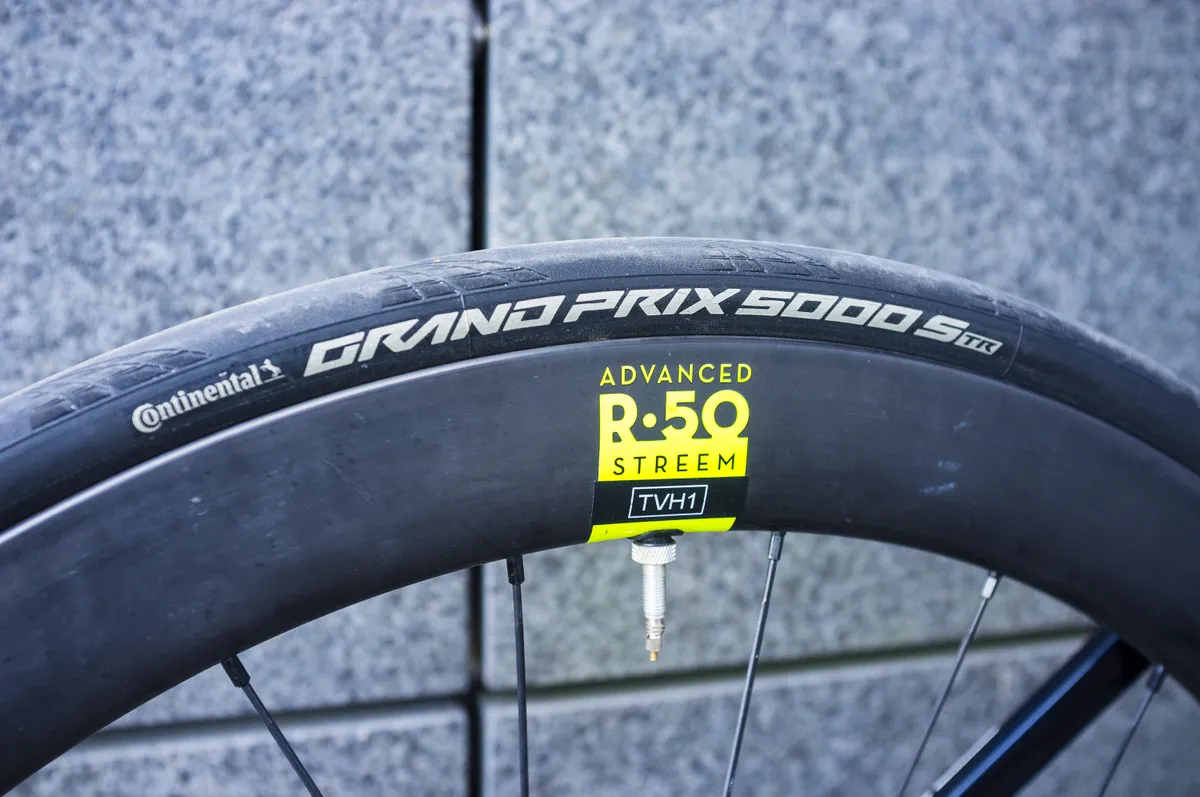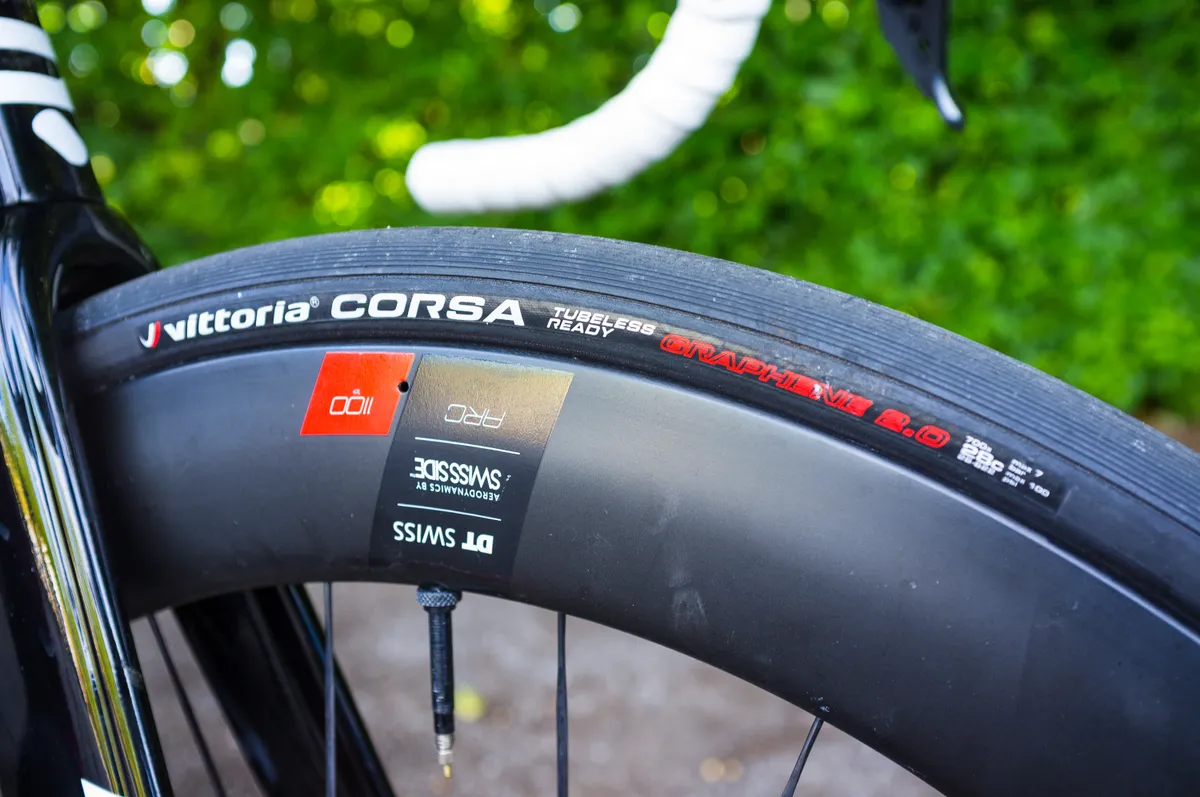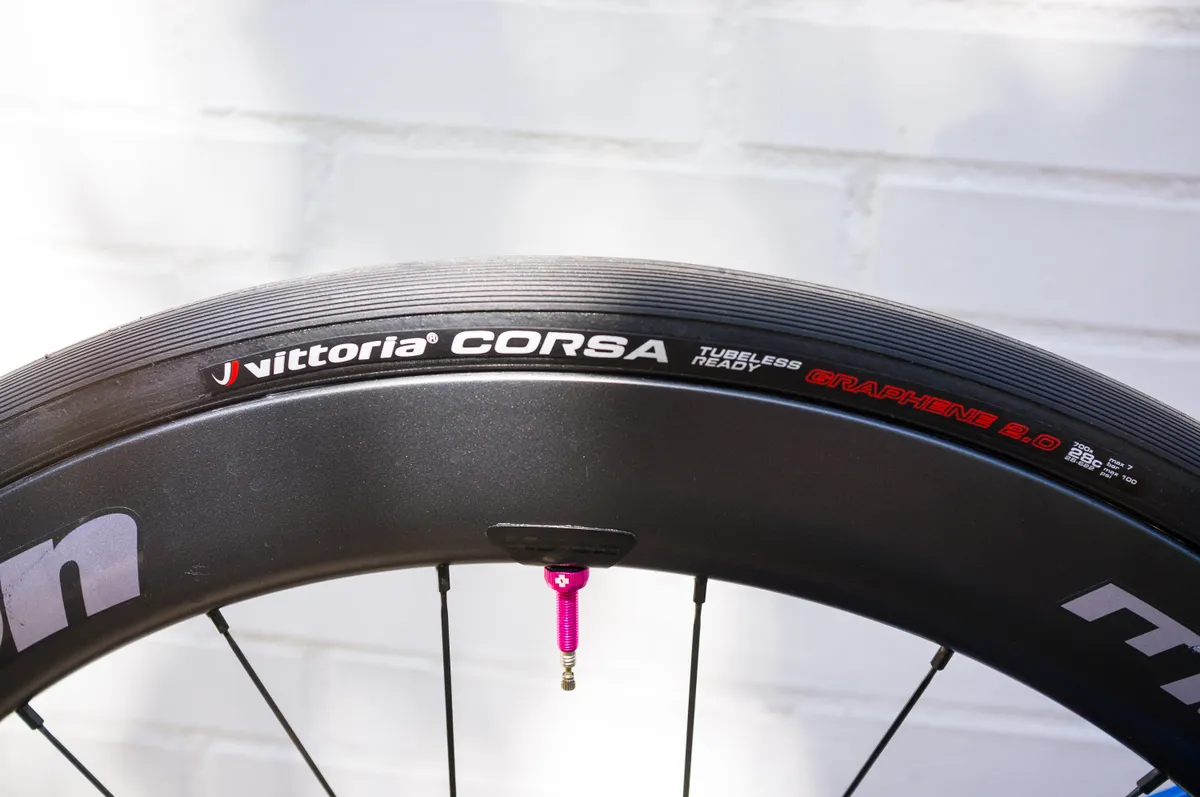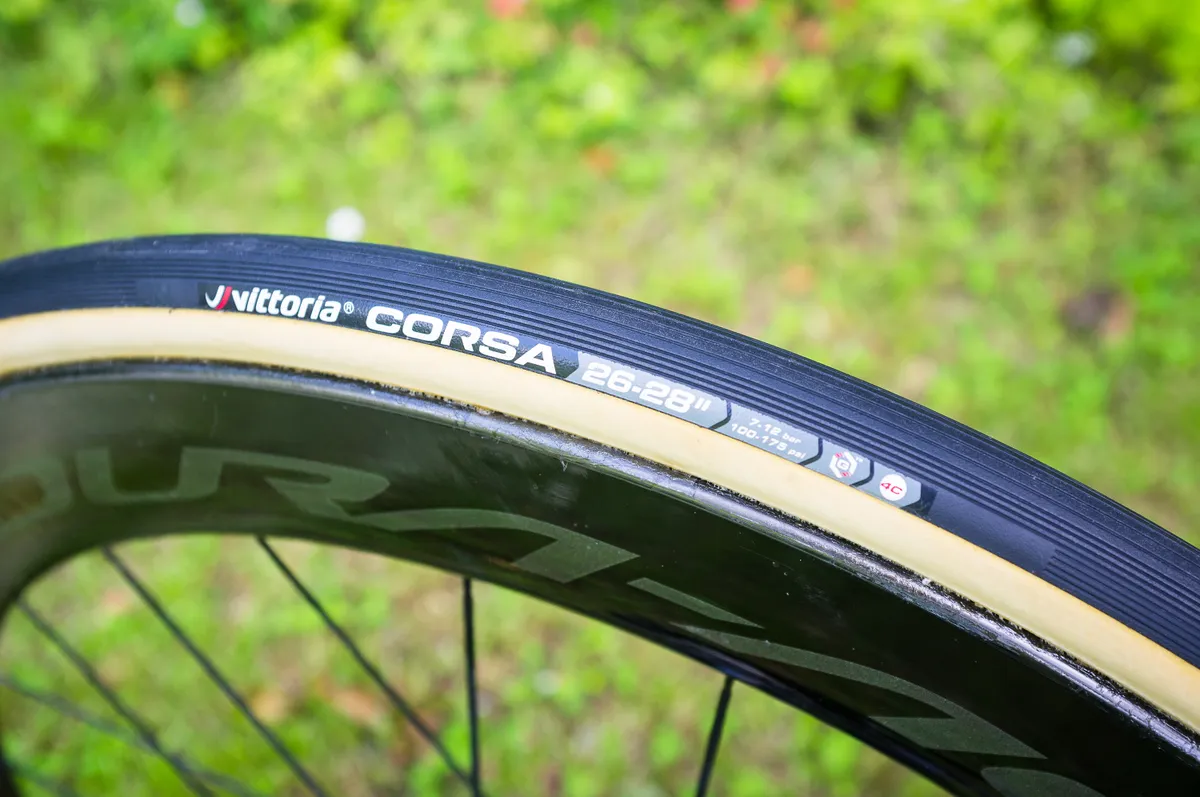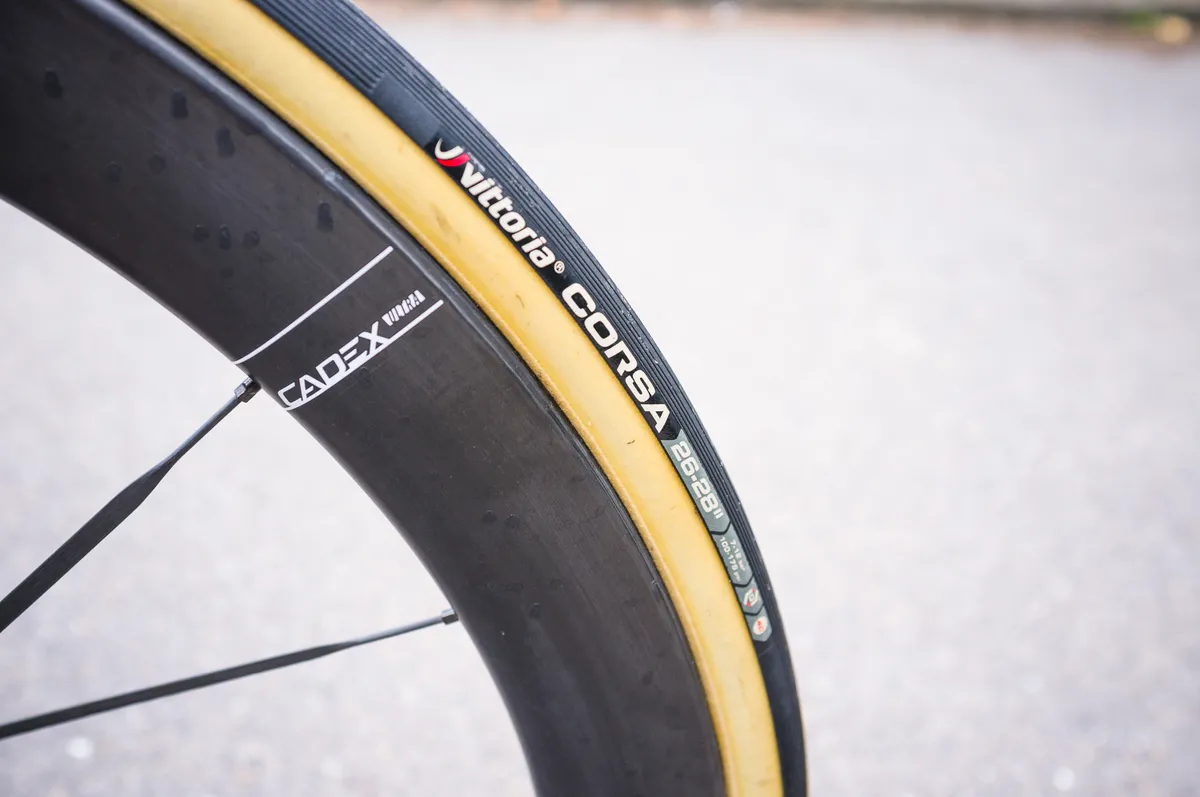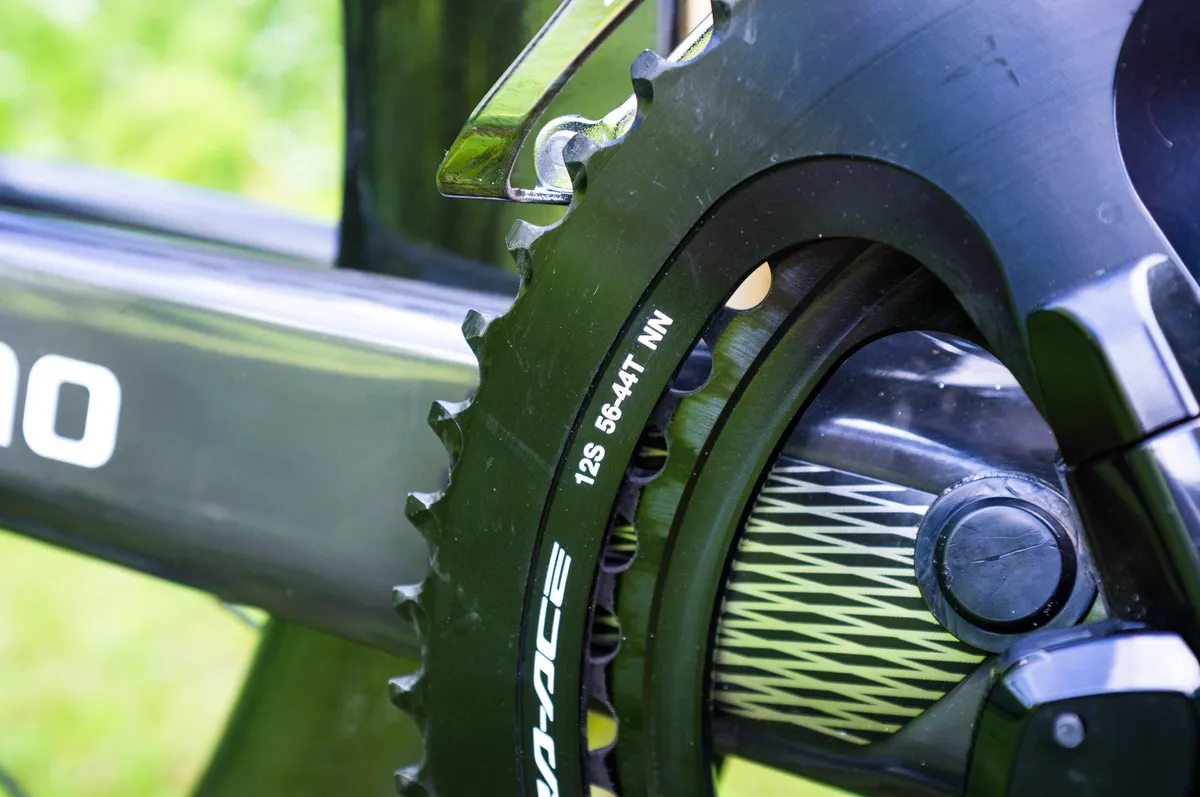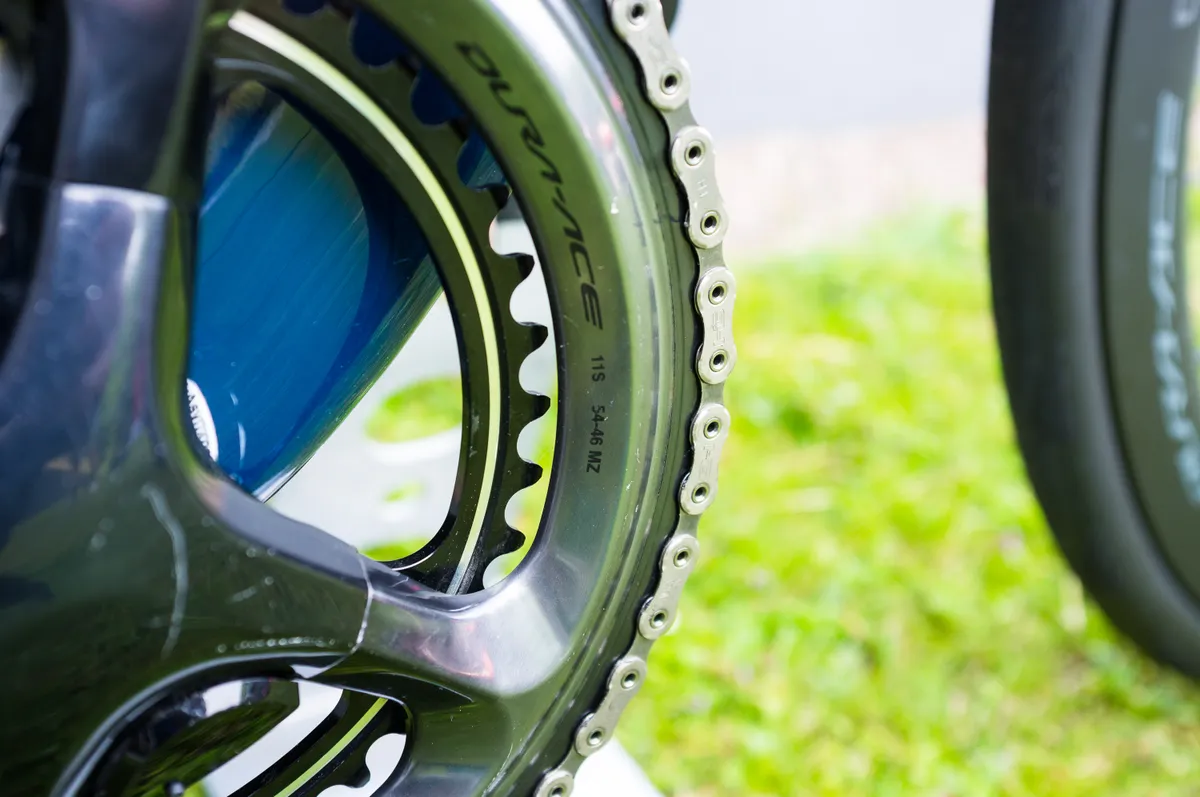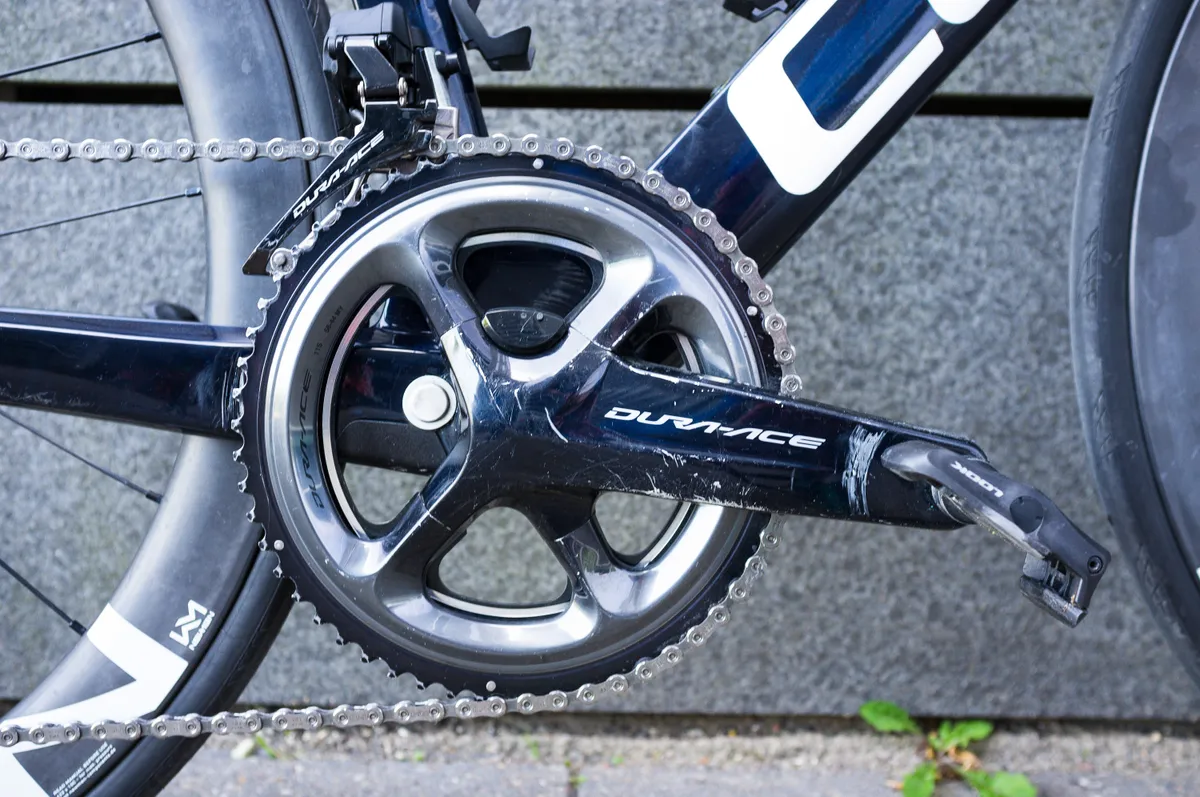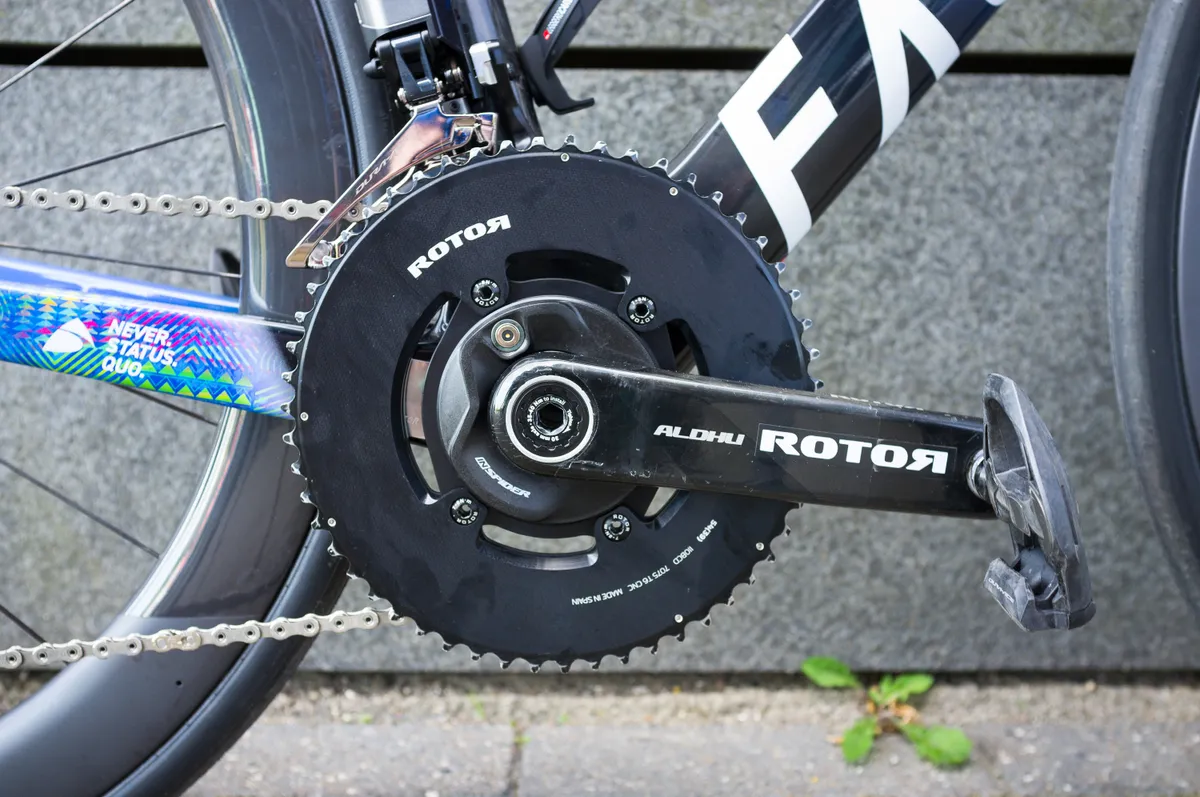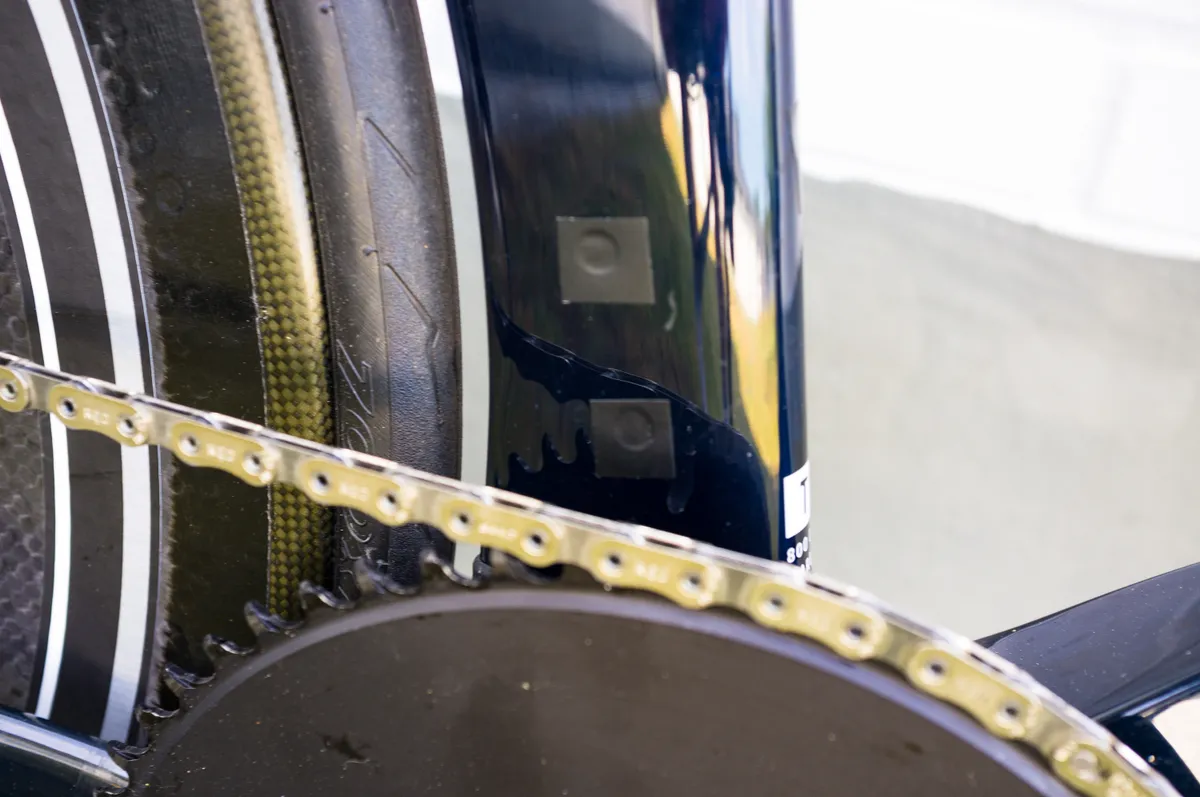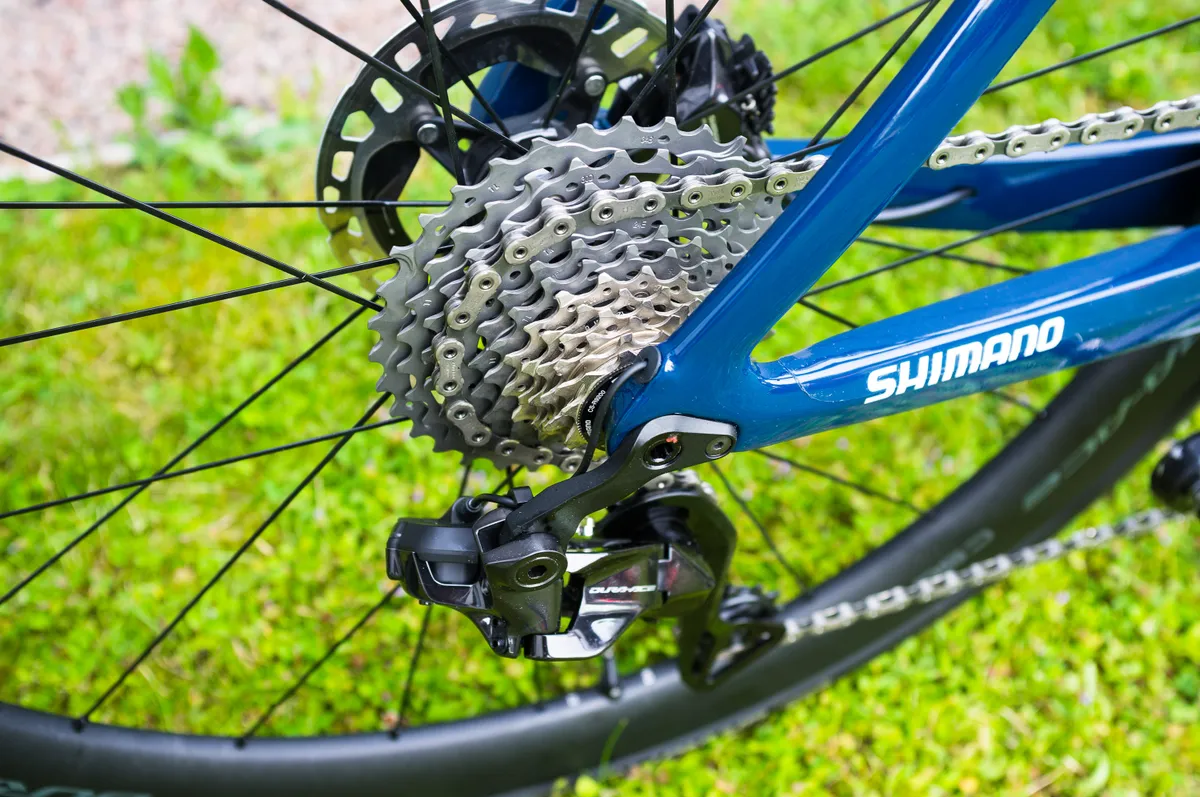We recently spent a couple of days in Copenhagen, Denmark, at the Grand Depart of the 2022 Tour de France, hassling team mechanics and press contacts for access to the latest and greatest pro bikes.
As the sport evolves, so do the bikes, and there are always some distinct trends to bikes at the Tour, if you look carefully.
With that in mind, here are the top five tech trends we spotted at the 2022 Tour de France.
Heavy bikes
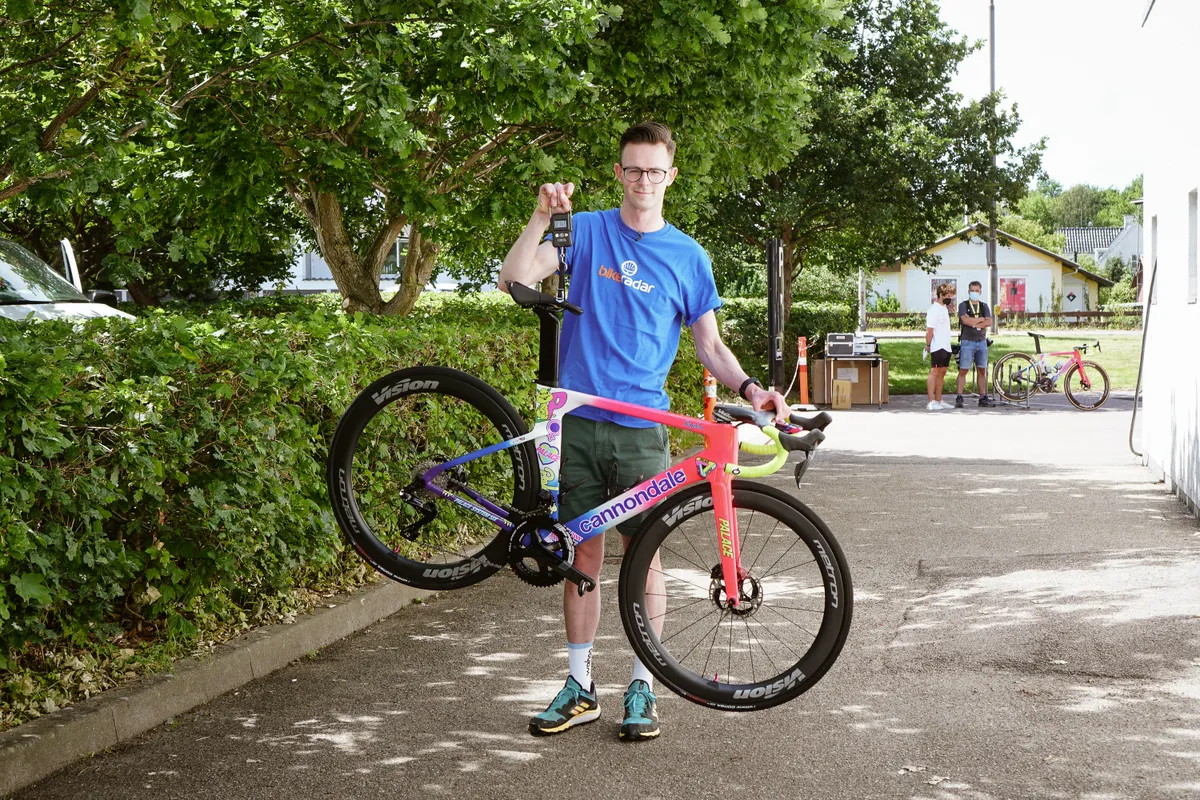
If you’ve seen our video on the top 5 new bikes we spotted at the Tour de France, you’ll know that pro bikes might be getting more aerodynamic with every generation, but they don’t seem to get much lighter.
While we weren’t allowed to weigh every bike we saw at this year’s Tour, the ones we did all weighed around 7.6-8.3kg.
For those who aren't aware of the intricacies of cycling’s complicated technical regulations, that’s around a kilogram heavier than the UCI’s minimum weight limit of 6.8kg.
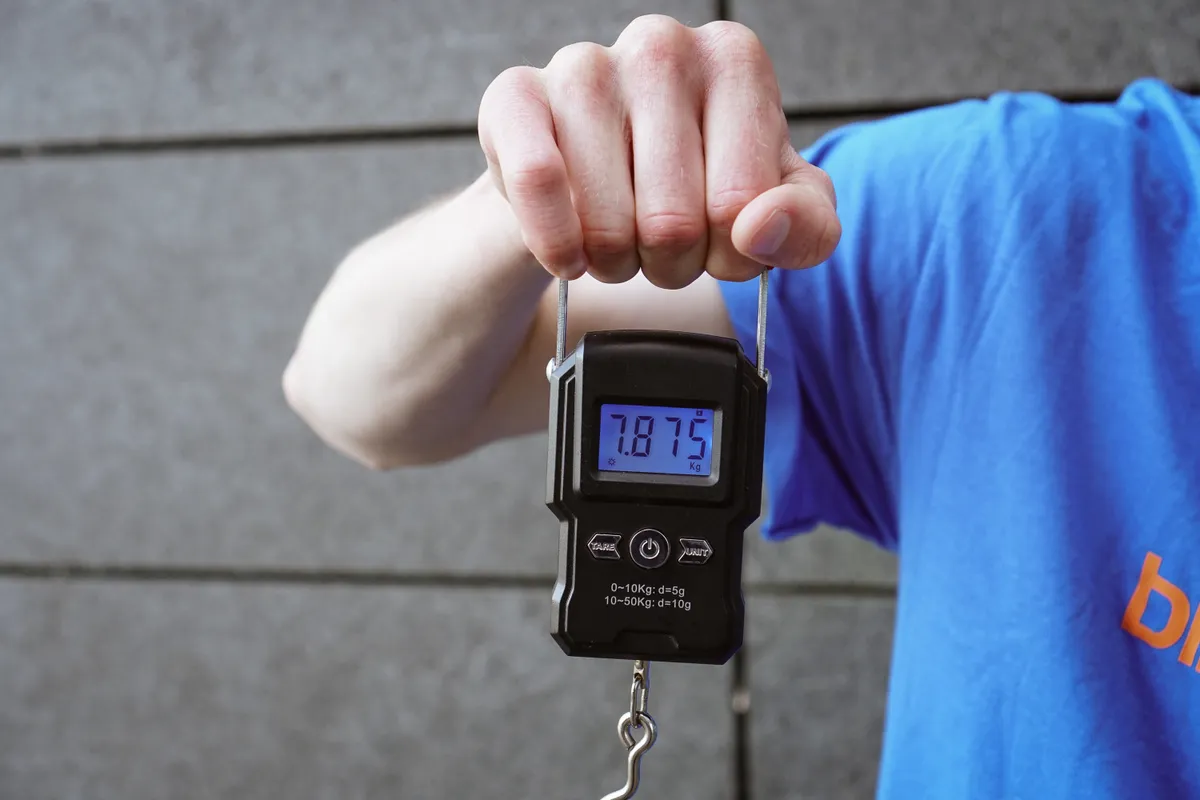
That’s right – many pros at the Tour de France are riding bikes that could be two full water bottles lighter, according to the rules.
How can the bikes being raced at the pinnacle of the sport be so heavy, when manufacturers are endlessly claiming their latest and greatest bikes are ‘the lightest they’ve ever been’?
The answer is, as you might expect, complicated.
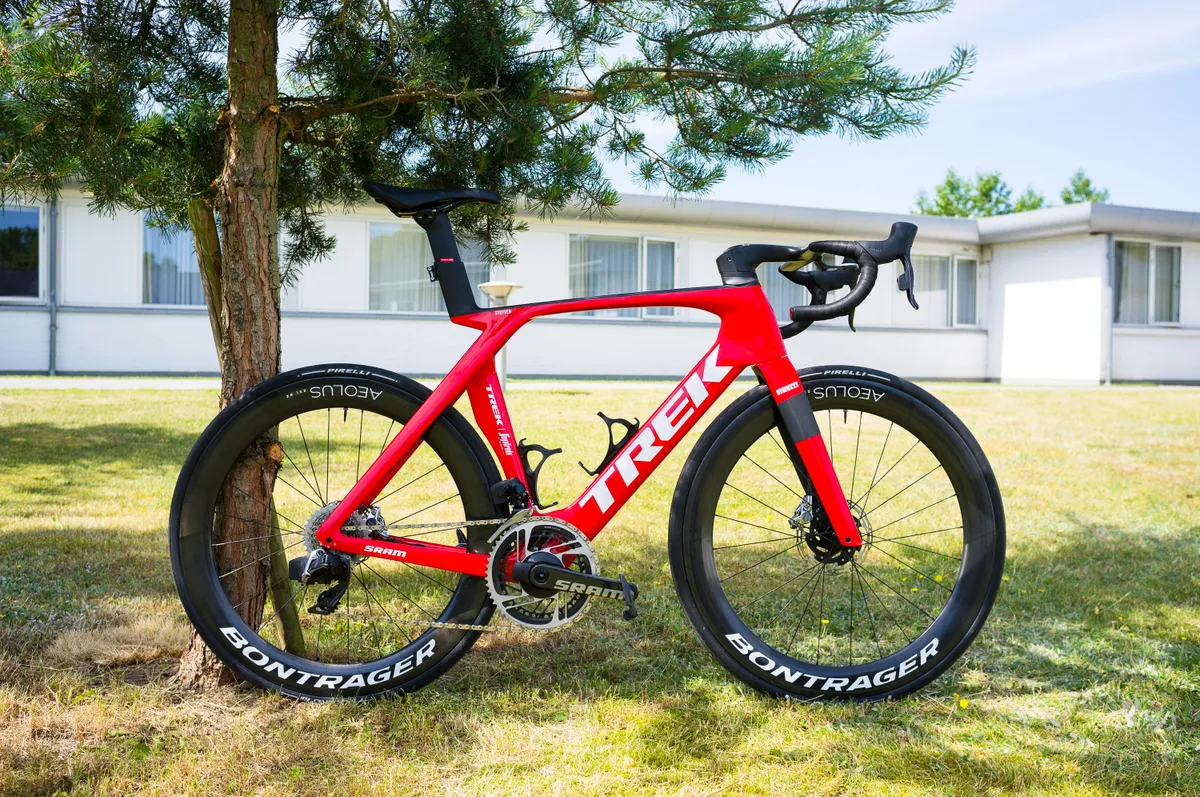
Manufacturers usually aren’t lying when they tell us their new bikes are lighter than the previous models.
They may, however, be creative with the truth.
Claimed weights for new bikes are typically taken with the bike’s lightest possible setup, often with lightweight paintjobs and lightweight finishing kit, and without pedals, bottle cages, computer mounts or accessories.
The bikes we weighed at the Tour, in contrast, mostly had team issue paintjobs designed to attract attention and look nice in pictures.
They also had pedals and everything else you need to actually ride the bikes in the real world.
They were all optimised for the flat opening stages in Denmark, too.
That meant practically everyone was on a dedicated aero road bike with deeper, heavier rims and bigger chainrings than normal.
Even the diminutive sprinter, Caleb Ewan, of Team Lotto-Soudal, was using 62mm-deep rims on his Ridley Noah Fast.
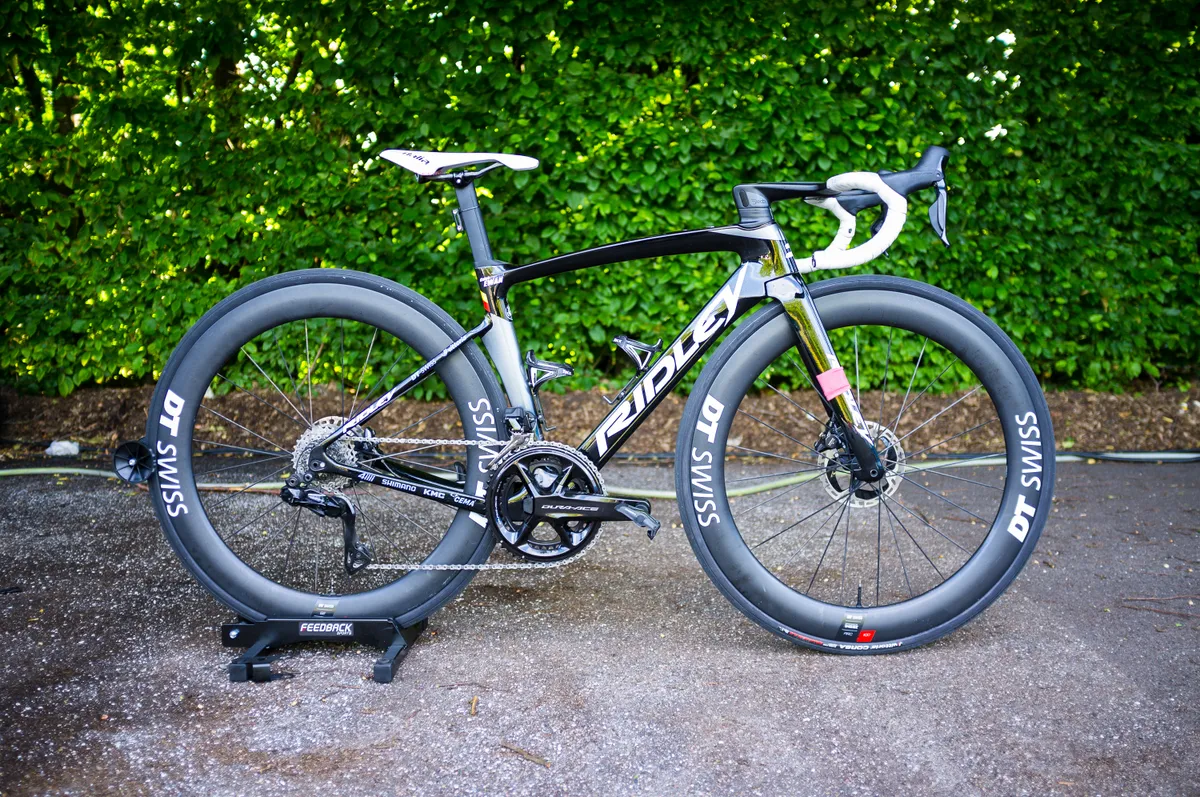
Many pro riders will also forgo the latest, lightest and most expensive kit in favour of kit they simply prefer.
That could mean an older, heavier saddle – as we saw on Jasper Stuyven’s new Trek Madone SLR – or a set of non-stock handlebars that adds weight to the bike compared to a stock build.
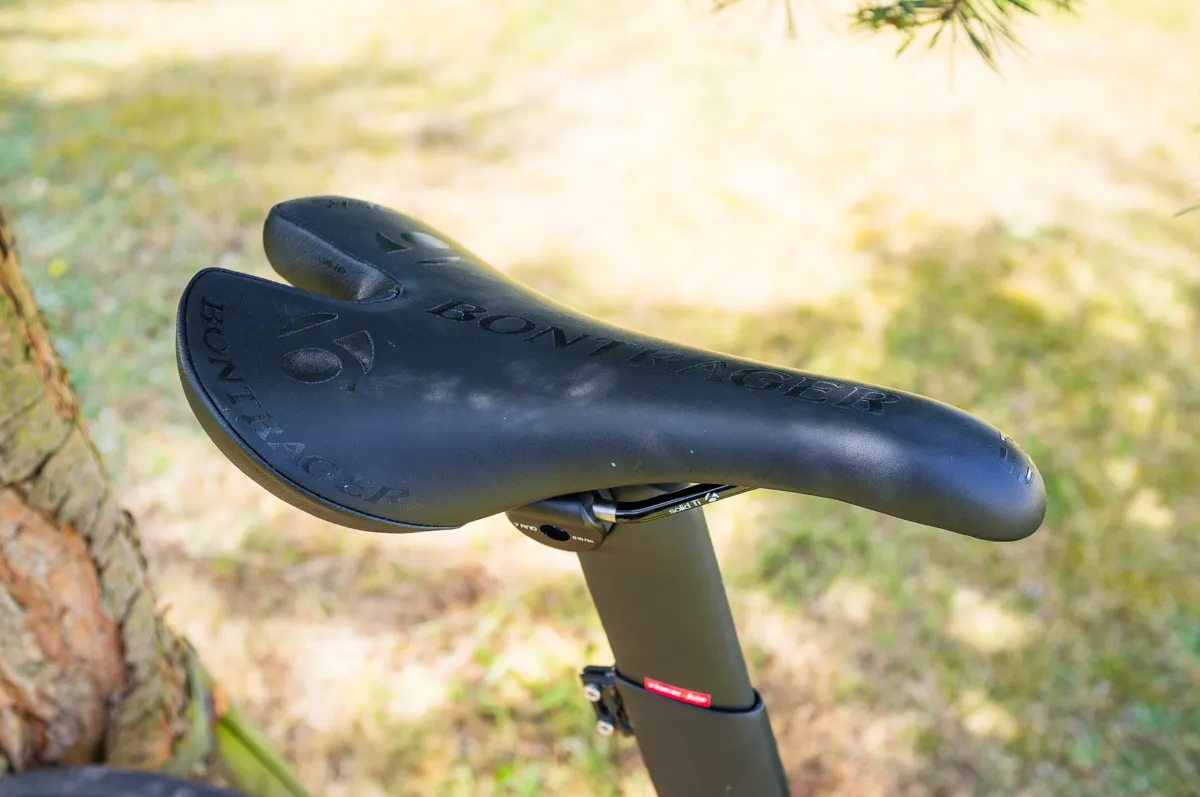
Lastly, it’s undoubtedly true that the move to hydraulic road disc brakes has contributed to this peloton-wide increase in bike weight.
We can argue until the cows come home whether this change has made road bikes faster or not, but the pro peloton have made their bed (or had it made for them) and now have to sleep in it.
New aero tricks
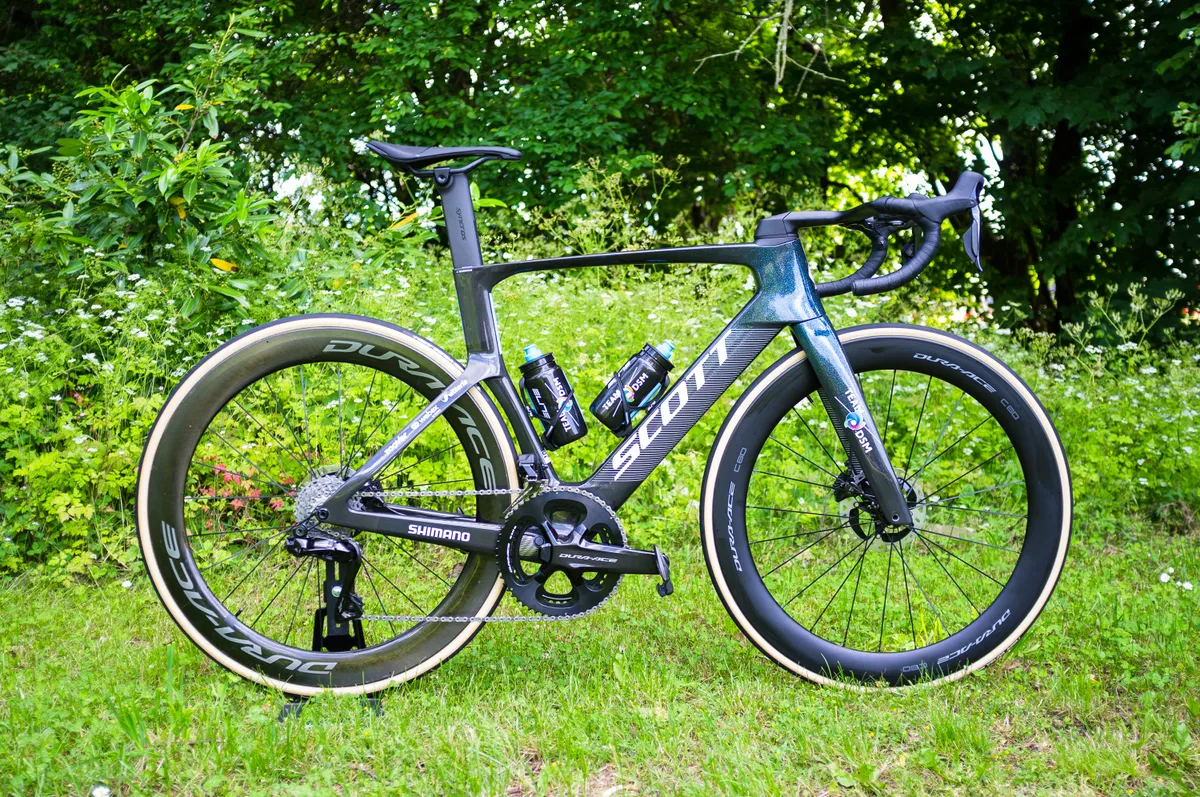
As the peloton gets faster and faster, the focus on improving rider aerodynamics intensifies with each passing year.
The more obvious aero upgrades were the brand new aero road bikes, such as the latest Trek Madone SLR and Scott Foil RC.
Both bikes are claimed to offer significant reductions in aero drag versus the previous models.
Beyond that, though, many riders and teams went even further in search of aerodynamic efficiency.
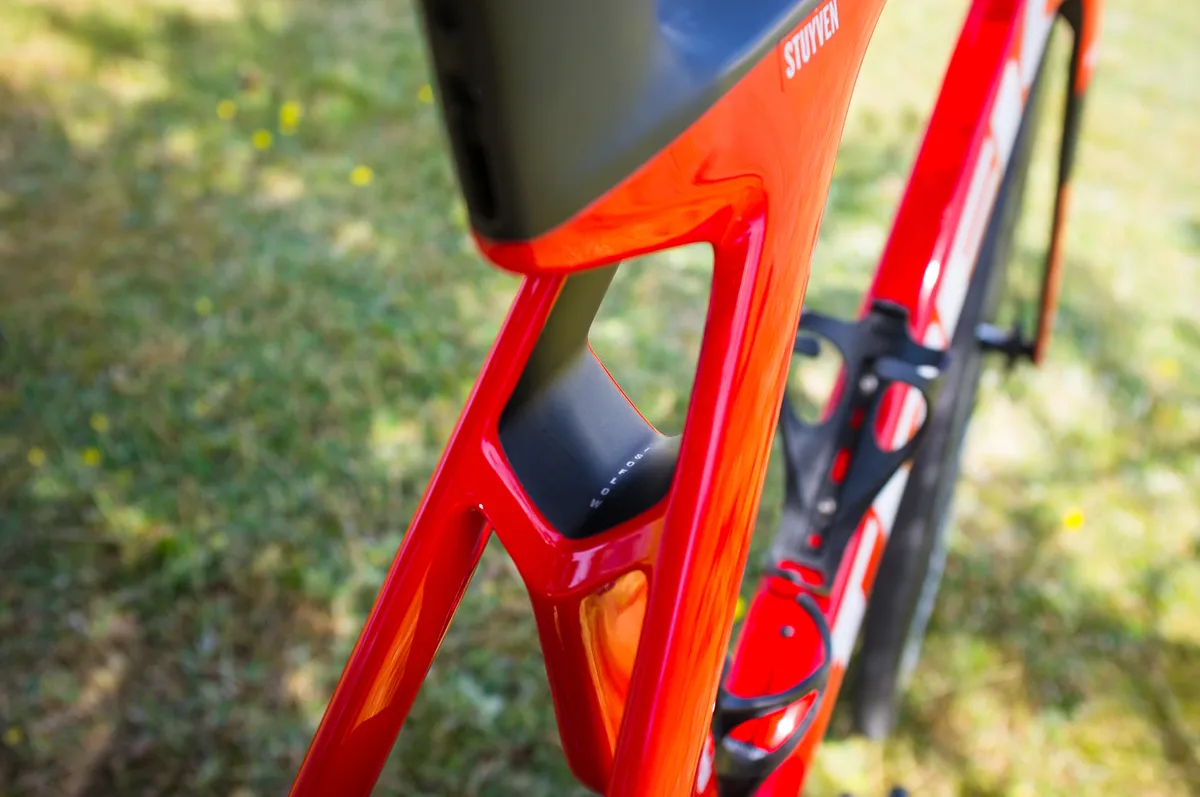
42cm wide bars used to be the de facto standard in the pro peloton, but we saw most riders on narrower handlebars at this year’s Tour. In fact, we only measured one handlebar wider than 40cm during our time in Copenhagen – a 42cm-wide handlebar on Chris Juul-Jensen’s new Giant Propel Advanced SL.
Taco van der Hoorn’s Cube Litening C:68X TE was the most extreme example, though.
While van der Hoorn’s handlebars measured around 38cm at the drops, the shifter hoods were turned aggressively inwards to offer an effective bar width of just 30cm.
With the Tour’s opening stage being a pan-flat time trial, teams looking to be in the mix also turned up with some interesting aero tricks.
World time trial champion, Filippo Ganna, and a few of his Team Ineos-Grenadiers team-mates, used the new Pinarello Bolide F time trial bike, complete with prototype wheels by Princeton CarbonWorks.
Team Ineos-Grenadiers riders had some whacky visors with strange plastic edging and some unusually large helmets, too.
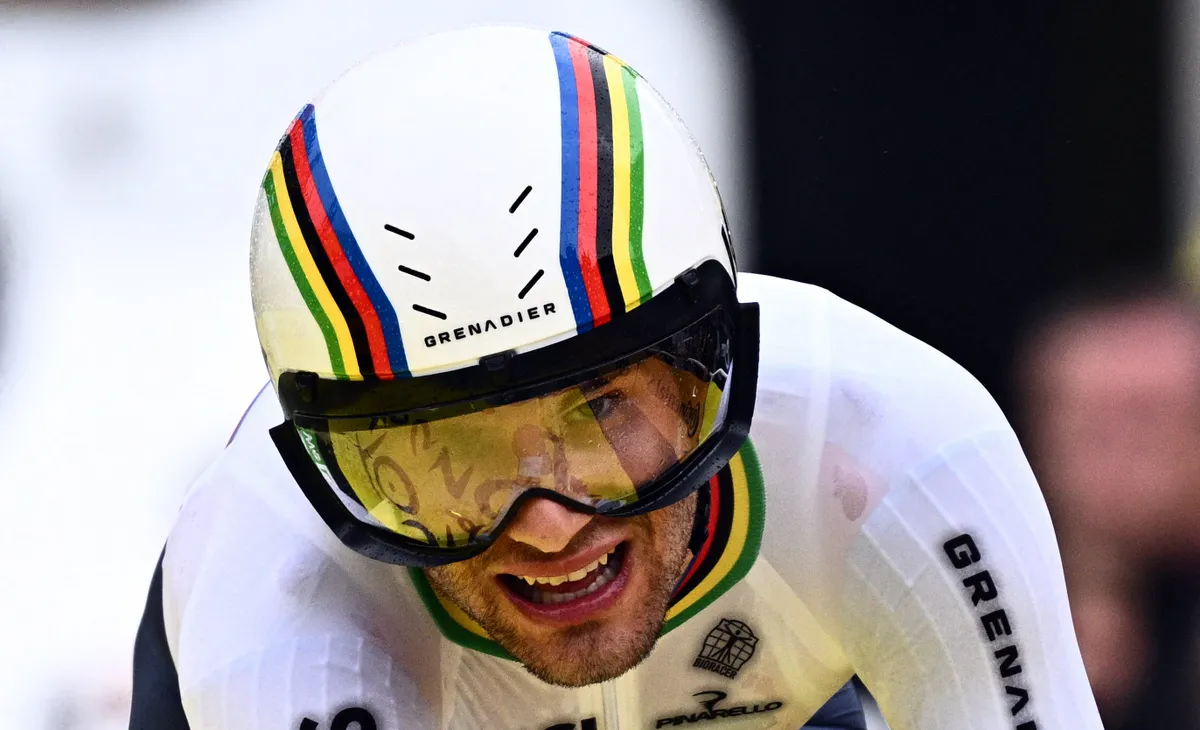
While we don’t know for certain, our best guess is that these tricks are intended to help divert airflow around riders' shoulders, like the infamous POC Tempor, and reduce their aerodynamic drag.
Specialized provided its new S-Works TT5 helmet to its sponsored pro teams as well, which seems to be designed with similar principles in mind, though not every rider – including the stage winner, Yves Lampaert – chose to wear it on the day.
Lack of component availability
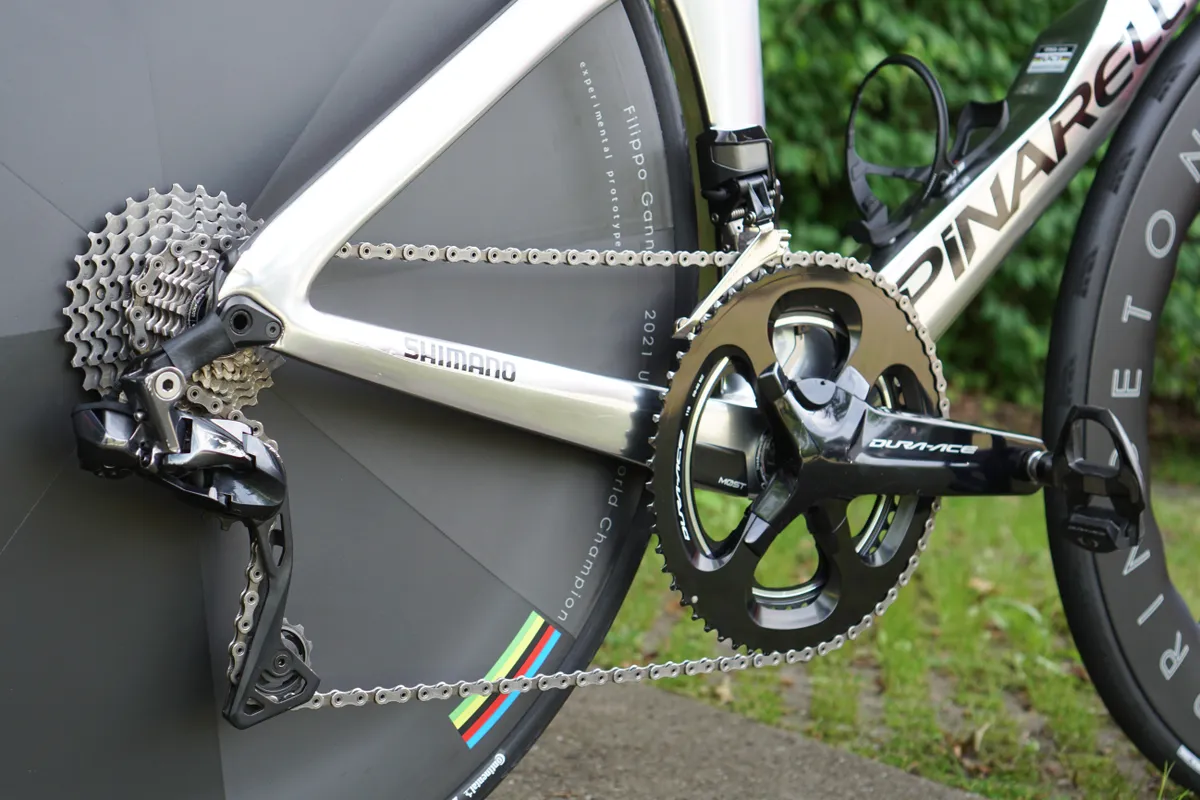
The Tour may be the sport’s biggest shop window, but even cycling’s biggest brands are still suffering from a lack of stock to display in it.
While most sponsored teams had the latest Dura-Ace Di2 R9200 groupsets on their road bikes, even the biggest teams can’t get hold of them for their time trial bikes, it seems.
Back-to-back world champion Filippo Ganna had to make do with 11-speed Dura-Ace Di2 R9100 on his bike.
The new Dura-Ace R9200 power meters were also in short supply, with many riders – including former Tour winner Geraint Thomas – still using the old, Dura-Ace R9100 power meter cranksets instead.
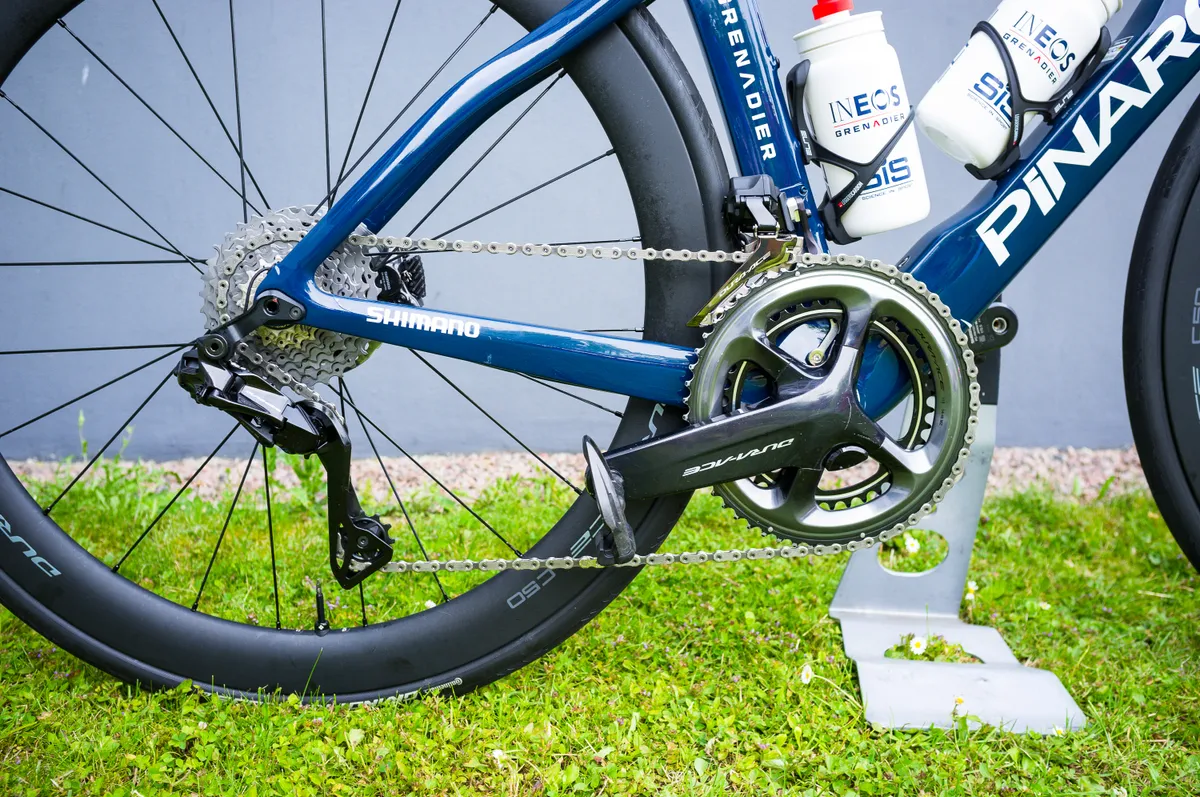
Officially, the 11-speed chainrings on the old R9100 cranksets aren’t compatible with the new 12-speed chains, and, anecdotally, some teams said they had experienced more chain drops in race situations when using the two together.
Possibly as a result, we saw a few teams using chain catchers for a little extra security and peace of mind.
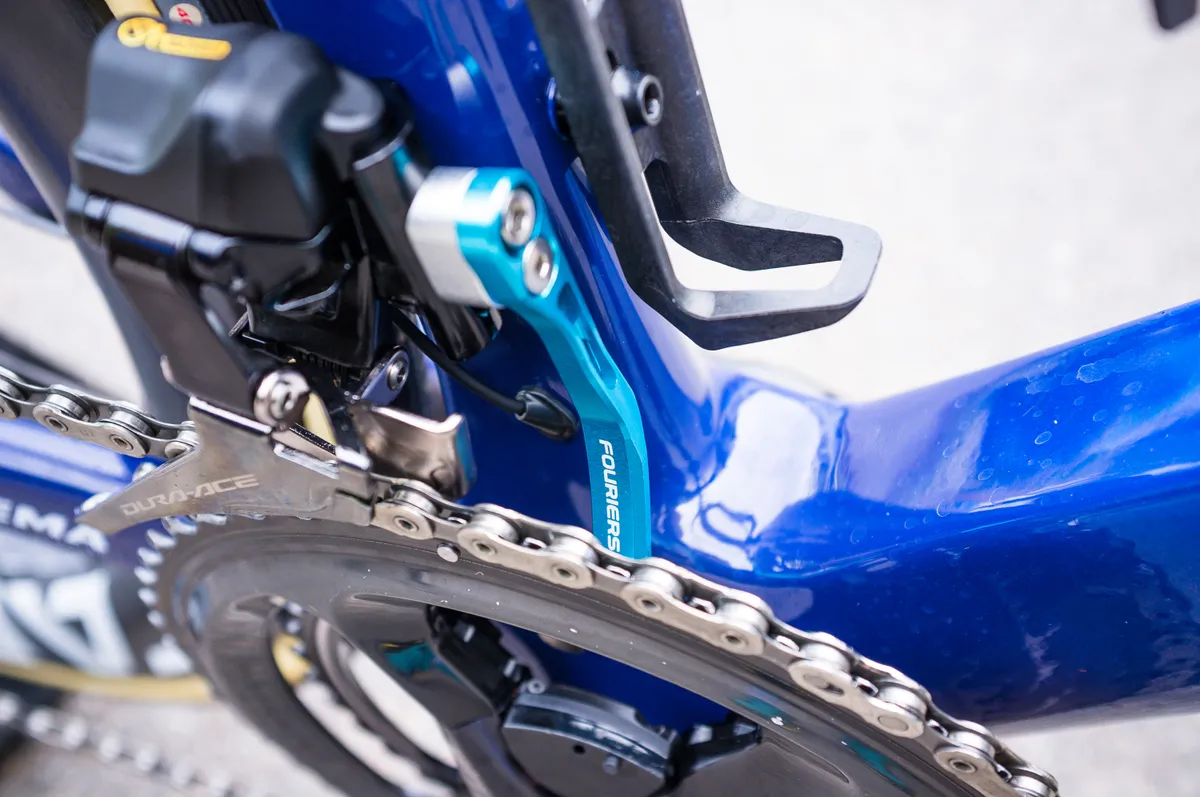
Perhaps indicating just how bad the situation is, Lotto-Soudal were even using Campagnolo Super Record EPS groupsets from last season on their Ridley Dean time trial bikes.
Though the Belgian team lists Shimano as a partner on its website (indicating the Japanese brand is a sponsor of the team), it appears even the world’s largest manufacturer of bicycle components can’t currently supply a WorldTour team with enough components.
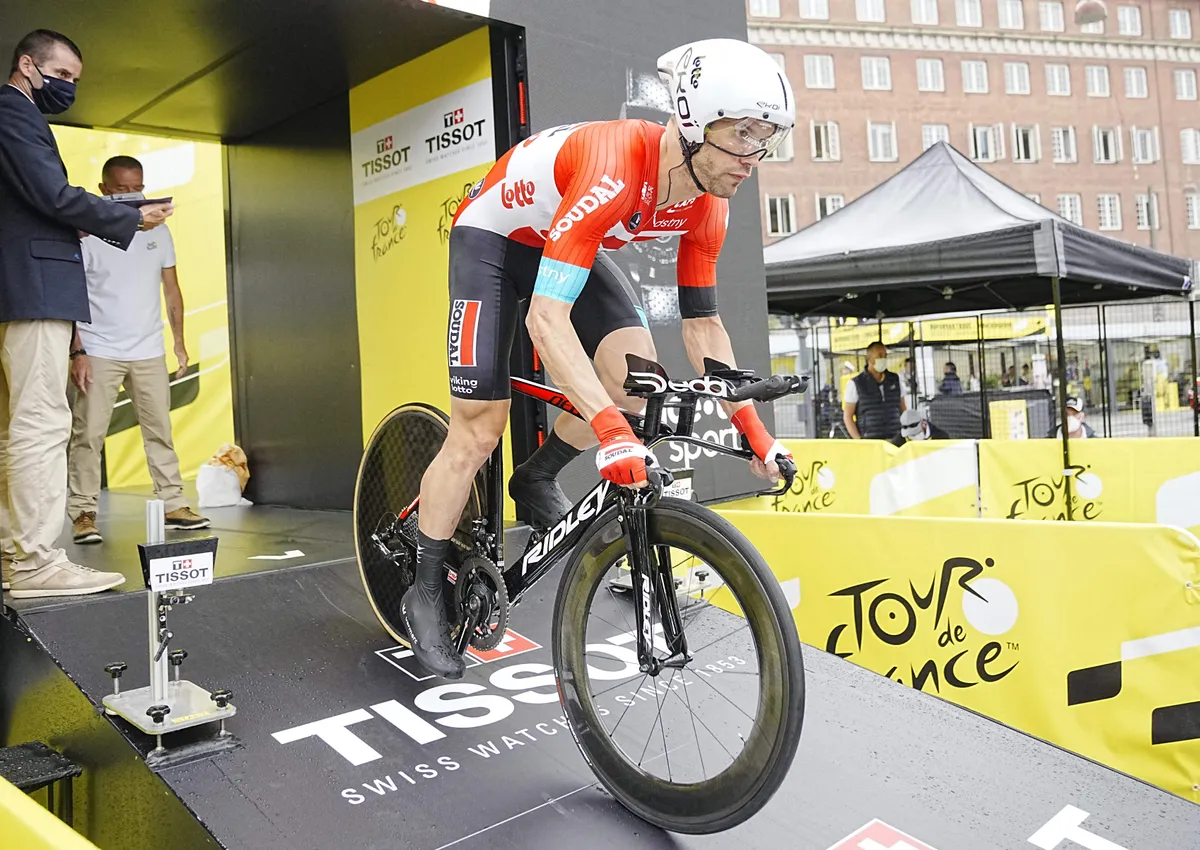
Team BikeExchange-Jayco has also had to borrow 12-speed Dura-Ace parts from its women’s squad to outfit the men’s bikes.
So, the next time you can’t get hold of those brake pads you need, you can at least take comfort in the knowledge that even the best riders in the world are having the same problems.
Emerging tyre tech
As we’ve commented before, the trend towards tubeless road tyre and wheel systems only continues to gather pace.
Some teams, such as Team Ineos-Grenadiers and Intermarché Wanty Gobert, appear to have made a complete switch to tubeless setups, using the Continental GP5000 S TR for road stages and a new TT version of the tyre for the opening time trial.
Of course, it remains to be seen whether that continues to be the case once the Tour moves into the mountains, but previous races in mountainous terrain this year have seen those teams stick to tubeless formula so far.
Mirroring wider trends across the road cycling industry, tyre sizes in the pro peloton are also continuing to grow.
We’re seeing more riders on 700 x 28c tyres, even for stages on good-quality tarmac roads.
Jasper Stuyven, for example, had 700 x 28c Pirelli P Zero Race TLR tyres on his Trek Madone SLR. They looked even larger mounted to his set of Bontrager Aeolus 62 RSL wheels, though (likely thanks to that wheelset’s generous internal rim width of 23mm).
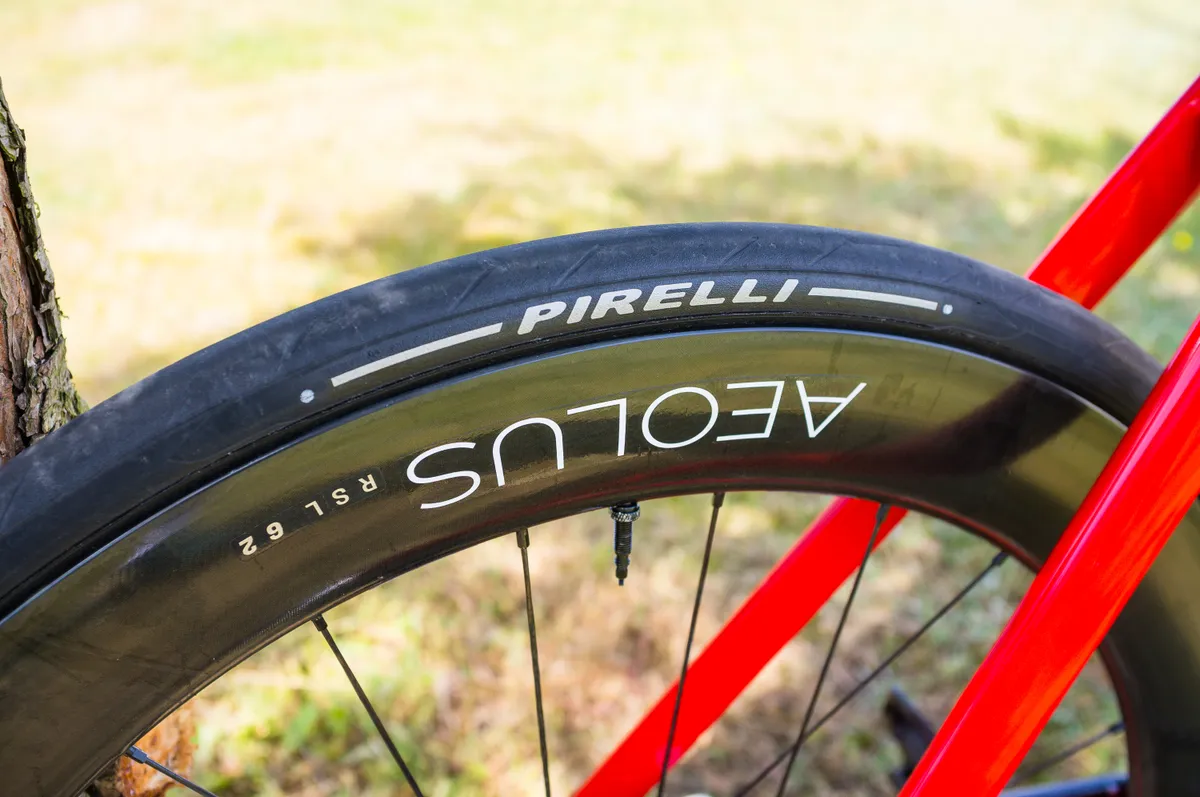
One tyre brand (that didn’t want to be named, for fear of giving away team secrets) also told us that some riders were using 28c tyres for time trials, as well, depending on the race circumstances.
Things have come a long way since the days when 28c tyres were the reserve of cobbled classics.
Despite all this, there are still a good number of teams and riders using tubular tyres, though.
Team Jumbo-Visma, EF Education-EasyPost, Team DSM and Team BikeExchange-Jayco, for example, all had a mix of tubeless and tubular Vittoria Corsa tyres on their bikes.
Dr. Ciarán O’Grady, a performance engineer at Israel-PremierTech, told us the team's riders would use a mix of clinchers, tubeless and tubular tyres through the race, depending on rider choice and the terrain of each stage.
We were also told that Israel-PremierTech domestiques would be using tubeless tyre inserts, as a bit of extra “insurance”.
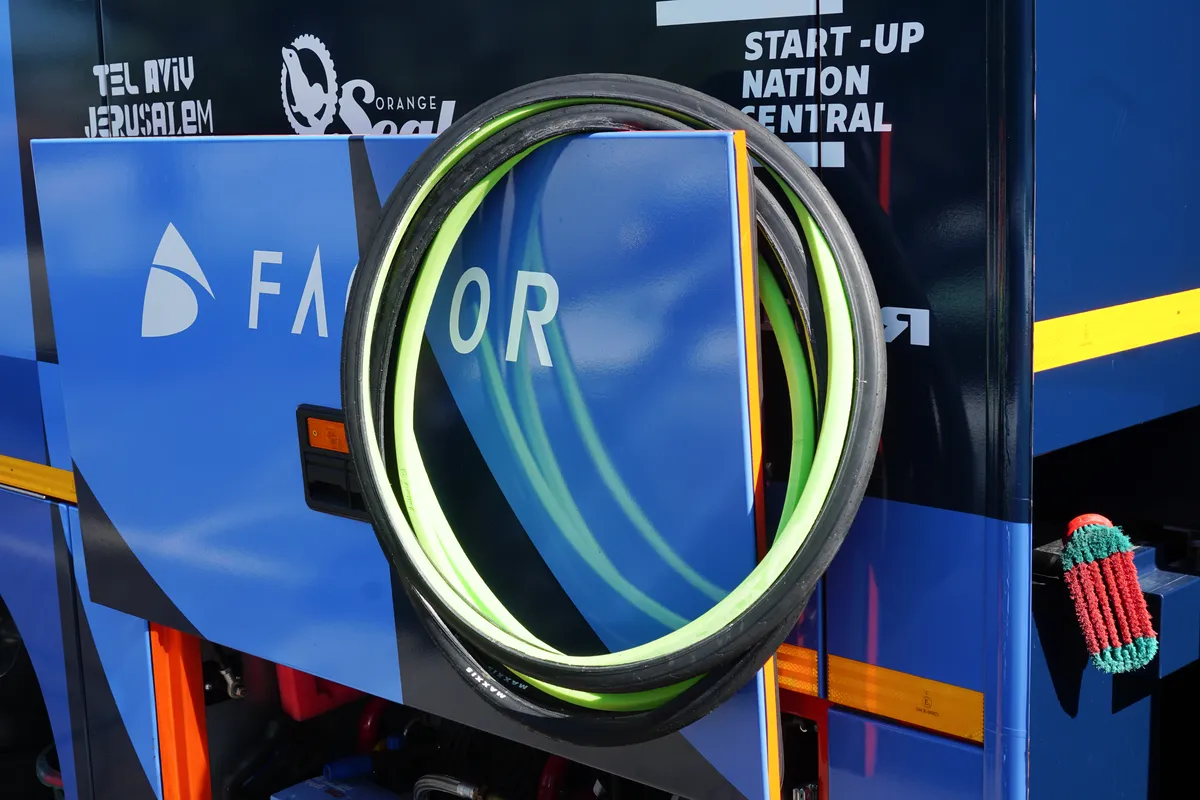
In contrast, the head mechanic at Intermarché Wanty Gobert, Mikey Van Kruiningen, told us his team had tried tubeless inserts but abandoned them.
As well as being a hassle to fit and remove, the foam inserts apparently have a tendency to soak up some of the tubeless sealant, meaning you need to add more than normal.
For weight-obsessed pros (who are, as discussed, already riding relatively heavy bikes these days), that’s apparently a deal breaker.
It’s likely this continuing obsession with weight is partly behind the reluctance of many pros to make the switch from tubular to tubeless, as well, despite the potential gains in rolling resistance and puncture protection on offer.
Big chainrings galore
Road bike gearing for punters might be getting smaller, with Shimano 105 Di2 only available with a compact chainset and 11-34t cassette as its ‘hardest’ gearing at launch, but the opposite is true for the pros.
During our entire time in Copenhagen, we didn’t see any big chainrings with fewer than 54 teeth, and many riders were going even bigger for sprint or windy stages – and especially on their time trial bikes.
We saw plenty of 58-tooth rings on time trial bikes, but the biggest chainrings we saw in person were the monster 60-tooth 1x dinner plates we saw on Jakob Fuglsang’s Factor Hanzo and Mads Pedersen’s Trek Speed Concept.
FSA, however, said its sponsored professional teams would be using its new 64-tooth 1x carbon fibre chainring at the opening time trial, although we didn’t manage to confirm this for ourselves.
Of course, not every rider using a monster big ring will have spent all of their time mashing around in the biggest gear available.
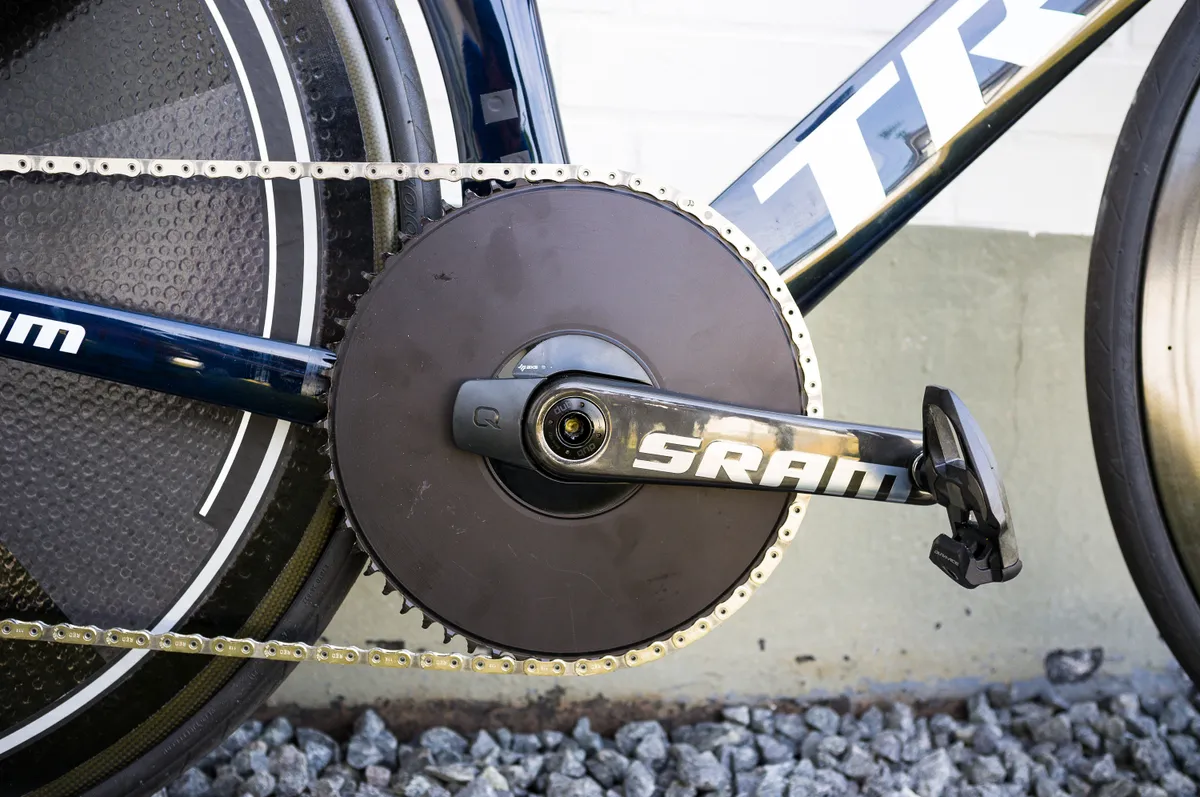
Much of the trend towards bigger chainrings is driven (if you’ll excuse the pun) by the pursuit of improved drivetrain efficiency.
It’s well established that larger chainrings and cassette cogs can offer a measurable reduction in the amount of power lost to drivetrain friction.
Those using such big front chainrings would likely have spent significant time in a slightly larger rear sprocket, with an improved chainline as a result.
Removing the front derailleur is also said to confer a small aerodynamic benefit as well, so it was no surprise to see plenty of riders ditching it for the pan-flat opening time trial.
The marginal gains are one thing, but the use of such massive chainrings also points to the fact that the speeds the pro peloton are achieving are getting pretty ridiculous – likely thanks to the mass adoption of smarter training techniques, power meters and aerodynamic equipment.
The 2022 edition of Paris-Roubaix, for example, was the fastest ever, with race winner Dylan Van Baarle, of Team Ineos-Grenadiers, averaging an absurd 45.79kph across the 257km race.
Those heavy modern bikes don’t seem to be holding too many pros back, then.
